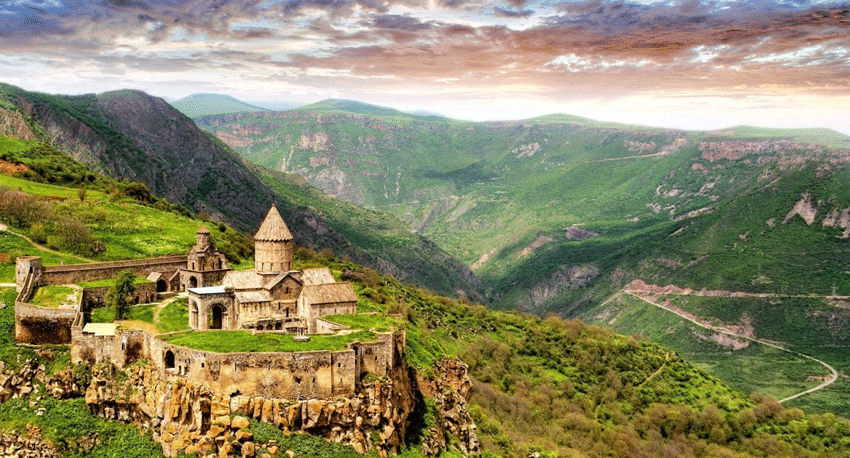Armenia, a small but fascinating country with a rich history, is becoming a global tourist attraction. In terms of nature, Armenia has the most stunning landscapes in Europe; With the peak of Mount Ararat on the horizon of the country, its shadow is wide. This mountain is the national symbol of Armenia and is mentioned in the Bible as Mount Ararat, where Noah's ark landed.
Armenia was the first country to declare Christianity as its national religion. The country is home to countless beautiful churches, often built in areas of unspoiled nature. The capital of Armenia, Yerevan, is one of the fastest developing cities in Europe and welcomes tourists from all over the world.
Street walking in the back alleys of Armenia
In addition to seeing historical monuments and sights, many tourists are interested in shopping in Armenian shopping centers and walking in the streets of their destination. Seeing shops and stores, passages and streets introduces us to the culture of the people of that city and country. In the following, we introduce some famous places in Armenia for street sightseeing.
Azadi Square
Right outside the Yerevan Opera House, you can see one of the famous places in Armenia, the Freedom Square. The historic Azadi Square is the main public gathering square in the Armenian capital. This square is currently considered a shopping area and a place for pedestrians to walk. Freedom Square has a pond and is a great place to people watch, especially in the nearby park.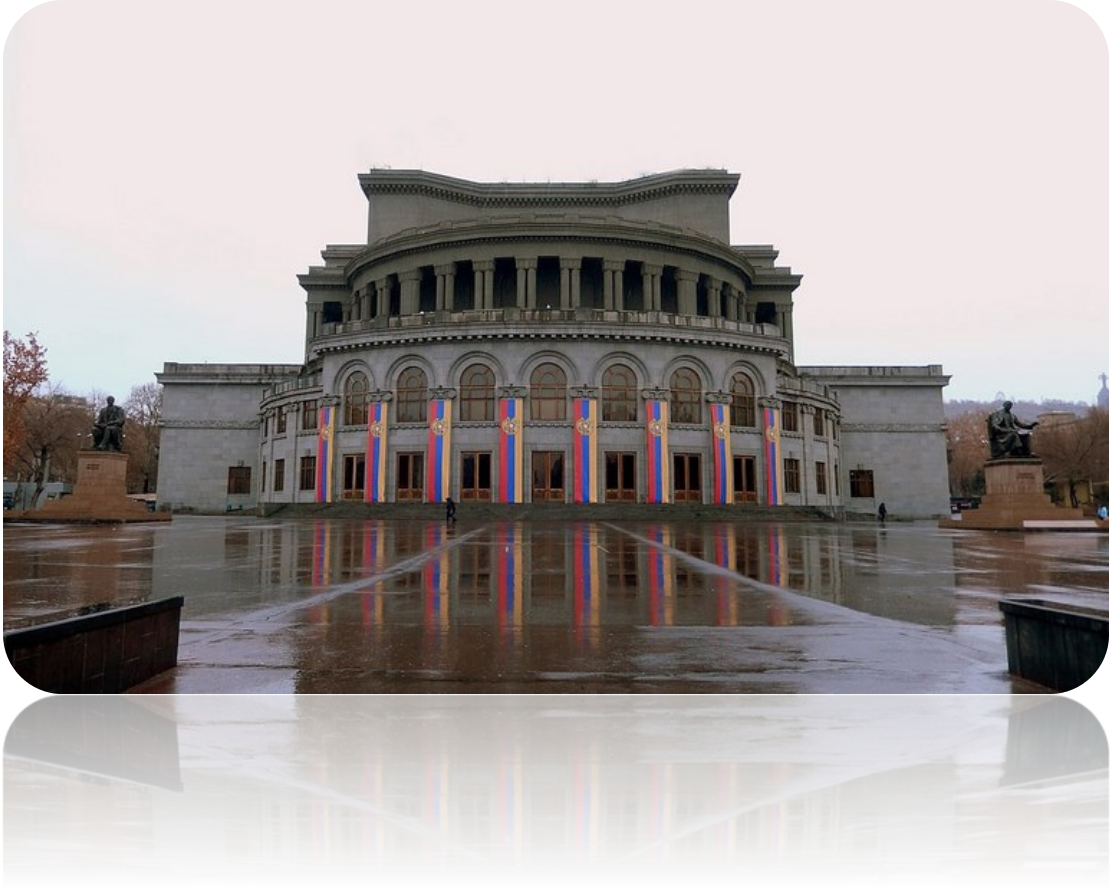
The interesting greenery of this square gives it a different perspective. You can try a grass-covered piano, a saxophone or a giant guitar, and admire the cheerful bronze statue of two famous Armenian composers. The pond of this square turns into an ice rink in winter. There are also numerous cafes and shops and a large parking lot around Azadi Square.
North Street of Yerevan
North Yerevan Street is a pedestrian street that was opened in 2007. This street is located in the center of the city and Kontourn area and connects Abuvian Street with Azadi Square on Tomanyan Street. Actually, this street is located between Republic Square and Opera Hall; Its length is 450 meters and its width is 27 meters. This street, which is one of the sights of Armenia, houses luxurious residential buildings, high-end commercial stores, commercial offices, coffee shops, hotels, restaurants and night clubs.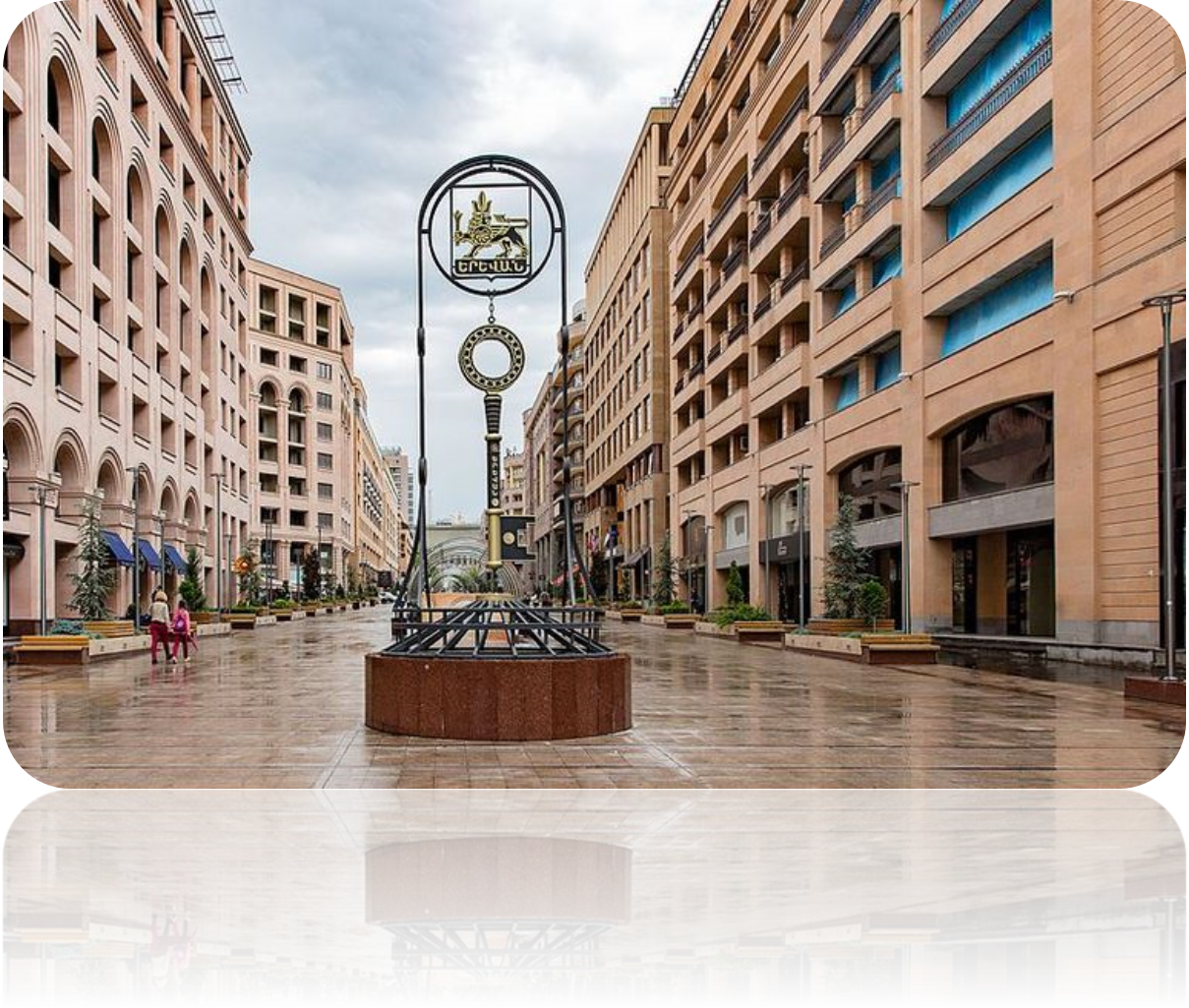
If you walk on this street in the evening, you can see street musicians and enjoy listening to their music. North Street is a place where you can feel the Armenian spirit. The architecture of this street is Armenian; Neither European nor Soviet! You will enjoy seeing its modern and unique architecture.
Abovian St
If you want to walk in the heart of Yerevan, what better place than Abovian street, this street is another famous place in Armenia. Between 1868 and 1920, Abuvian Street was known as Stafian Street. This street leads from the central square of the Republic to the statue of the prominent Armenian writer, Khachatur Abovian (1848-1809). This street was named "Abovian" in honor of this artist. Abuvian Street is the first planned street of the capital of Armenia.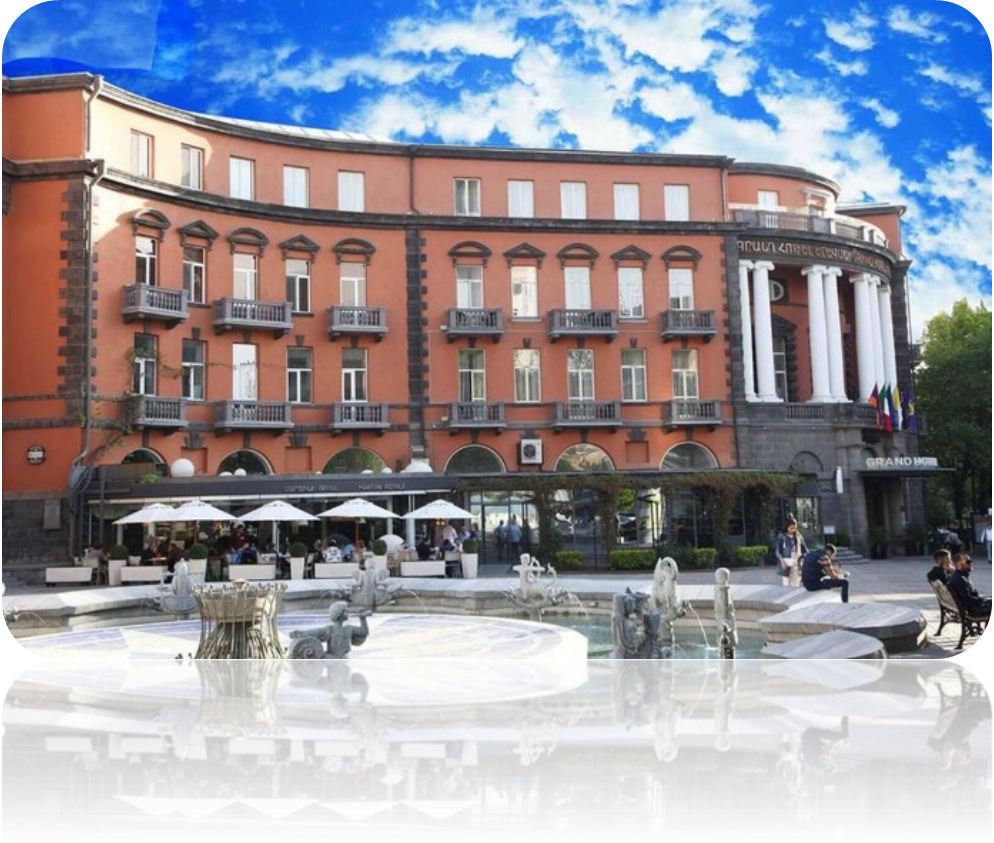
Abuvian is mostly the location of cultural and educational institutions, luxurious residential buildings, famous and prominent brand shops, commercial offices, coffee shops, hotels, restaurants and night clubs. Of course, restaurants and coffee shops, brand stores and clubs are the main components of this street. If you are tired of walking, just sit on the benches on both sides of the street, eat ice cream and enjoy the local music and dance performed on the street. take.
Mashtots Street
Mashtots Street, which was known as Lenin Street between 1924 and 1990, is a street and one of the sights of Armenia. This street is located in the central district of Yerevan. Mashtots Street is more than 6 kilometers long and is considered one of the longest streets in Armenia. It also intersects with two main streets of Yerevan, Tomanyan and Amiryan. Mashtots connects the north and south of Yerevan and starts with the Victory Bridge in the south and ends with the Matnadaran Museum in the north.
This street has heavy traffic most of the day and night due to high traffic. But it can be a suitable destination as an evening walk; That too with historical and cultural monuments and many shopping centers! Important historical buildings are located in the heart of this street, among which we can mention the Blue Mosque, Edward Izabekian Gallery, Yerevan Opera Theater, Nyeri Cinema, President's Residence and Yerevan Mariota State Theater.
Railway station
The railway station is located in the south of Yerevan city center and is about 2.8 km away from the Republic Square. It is also connected by a pedestrian tunnel to the nearby David Sassoon metro station. This station, which was built in the 1950s, is a huge reminder of Yerevan's past. In 2010, the railway station was rebuilt. During the renovation of the station space, they installed LCDs with train schedule information for passengers.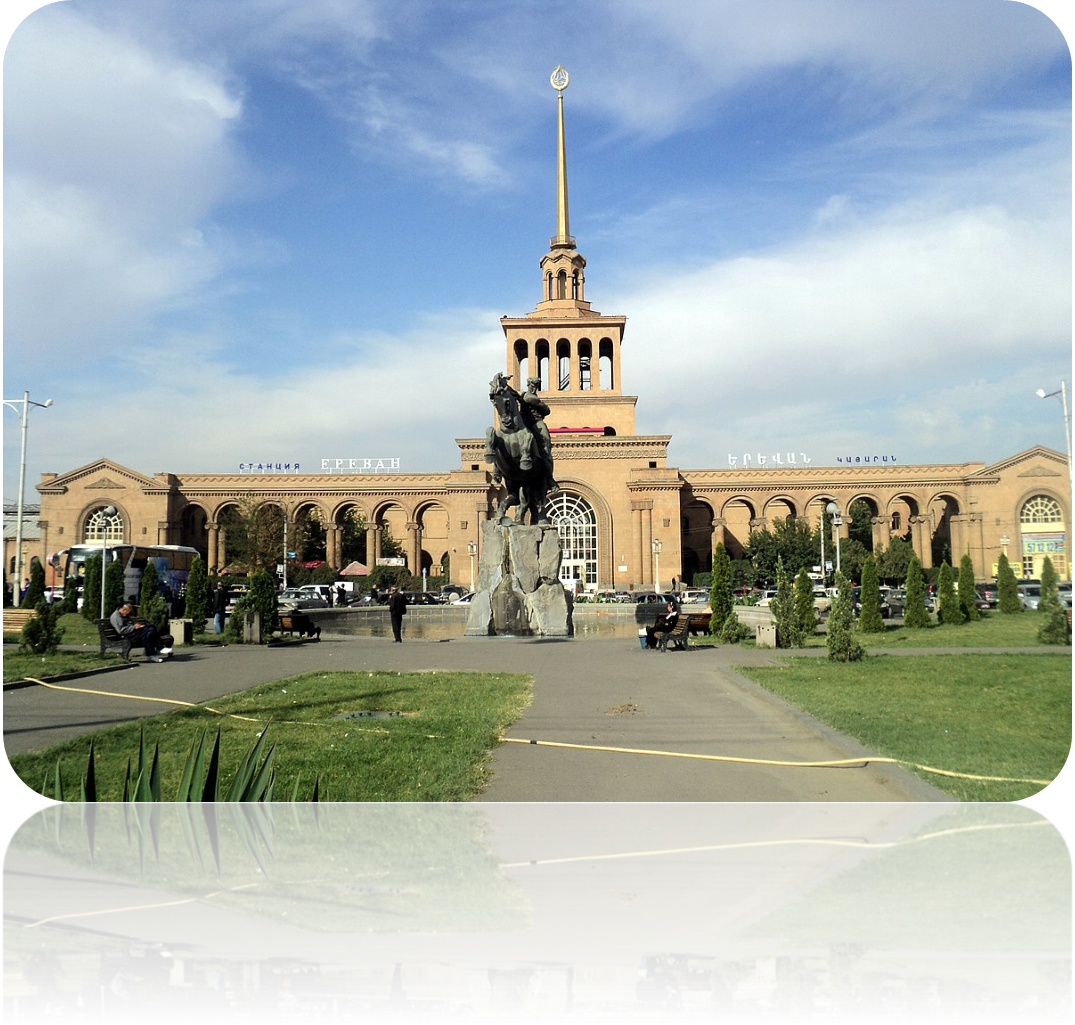
Also, the Yerevan railway station, which is one of the sights of Armenia, resembles a caravanserai. The interior of the station is mostly white with a beautiful decorated ceiling. There are gardens on each side of the station and even a restaurant will host you in this space. Every time you visit this station or even walk by it, you feel like you are in the 1930s or 40s. It is suggested that those interested in Soviet history, art or architecture should visit this station. This station has certain traditional elements of Armenian design and culture.
Yerevan Republic Square, the symbol of Armenia's independence
Republic Square of Yerevan is the dividing square for Istanbul. However, the divide in fame and popularity has gone much further. Republic Square is the most famous square of Yerevan and one of the main symbols of this city, many celebrations and ceremonies are held in this square. The Independence Day of Armenia is celebrated in this square every year on December 21. Previously, the name of this square was "Lenin Square", and on the 20th anniversary of the presence of the Soviet Union in Armenia, his statue was erected in this square. But after Armenia gained independence, Lenin's statue no longer had a place in this square and was removed.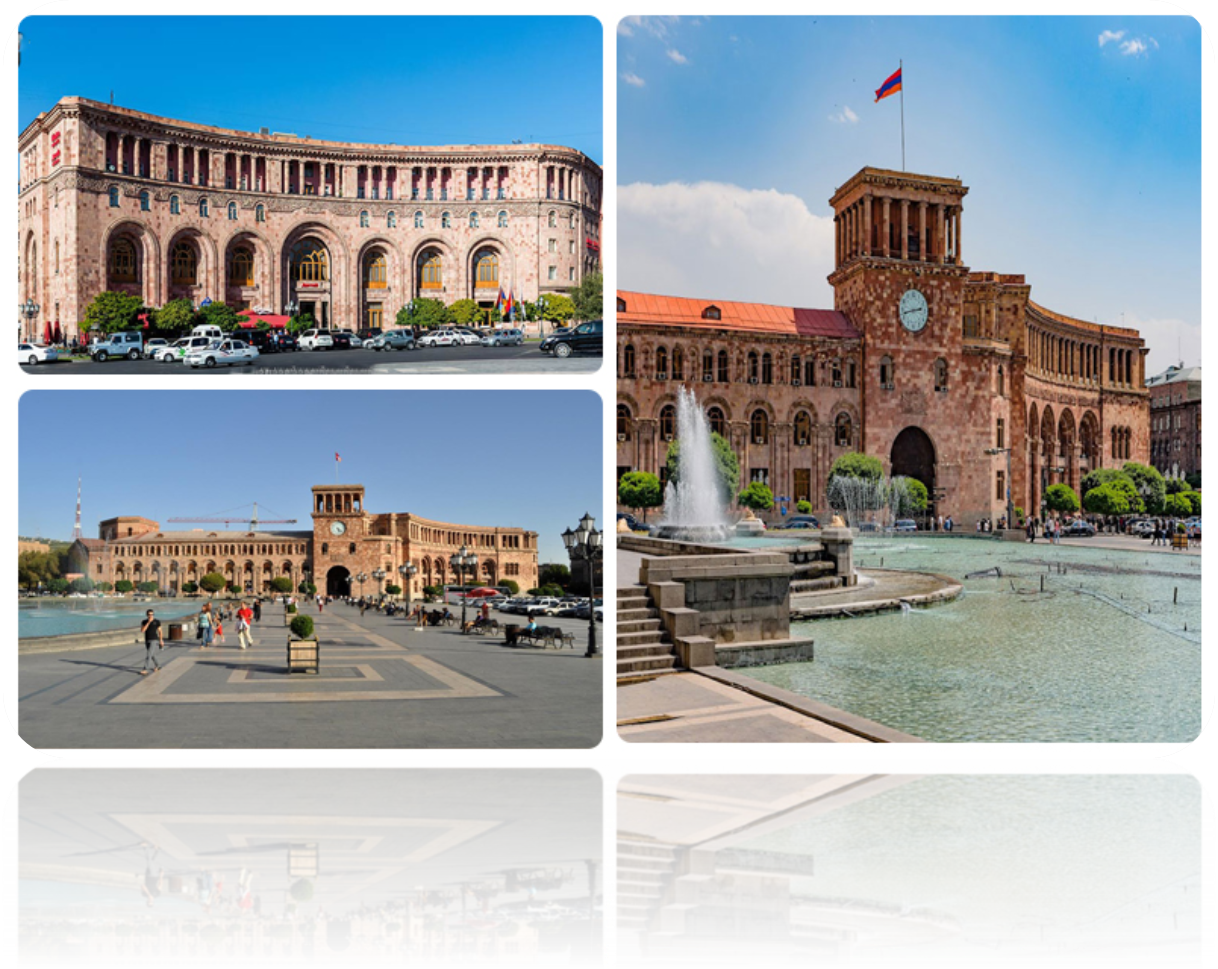
Architecture of Republic Square, Yerevan
The square has two parts, oval and trapezoidal, and the design of the paving stones of the oval part is inspired by the design of Armenian carpets. Musical fountains have been installed in the trapezoidal section, which creates a tourist-friendly atmosphere at night with the lighting and dancing of the fountains. The buildings around the square, which are more similar to the image of Armenia in our minds, are made of special pink and white stones (Tufa). The architectural style of the buildings around the square is neoclassical, and its Armenian designs and elegance stand out around the square. The clock that shows the time in the government building was brought from Moscow, the same period when Armenia was in the hands of the Soviet Union. The National Gallery and the History Museum are also around this square.
Historical attractions of Armenia and the effect of history
Armenia is several thousand years old, so the historical attractions of Armenia are one of the destinations that tourists should visit.
Erboni fortress
Erbuni Fortress is one of the oldest fortresses built in human history. This ancient fortress dates back to 782 BC and is considered the beginning of modern Yerevan. Erbuni Castle was built by the king of the Urartos, Argishti I. In the inscription of this castle, it is said: In the greatness of God, Argishti, the son of Manoa, built this powerful fortress and named it "Blood Castle" to create fear among the enemies of King Erbuni.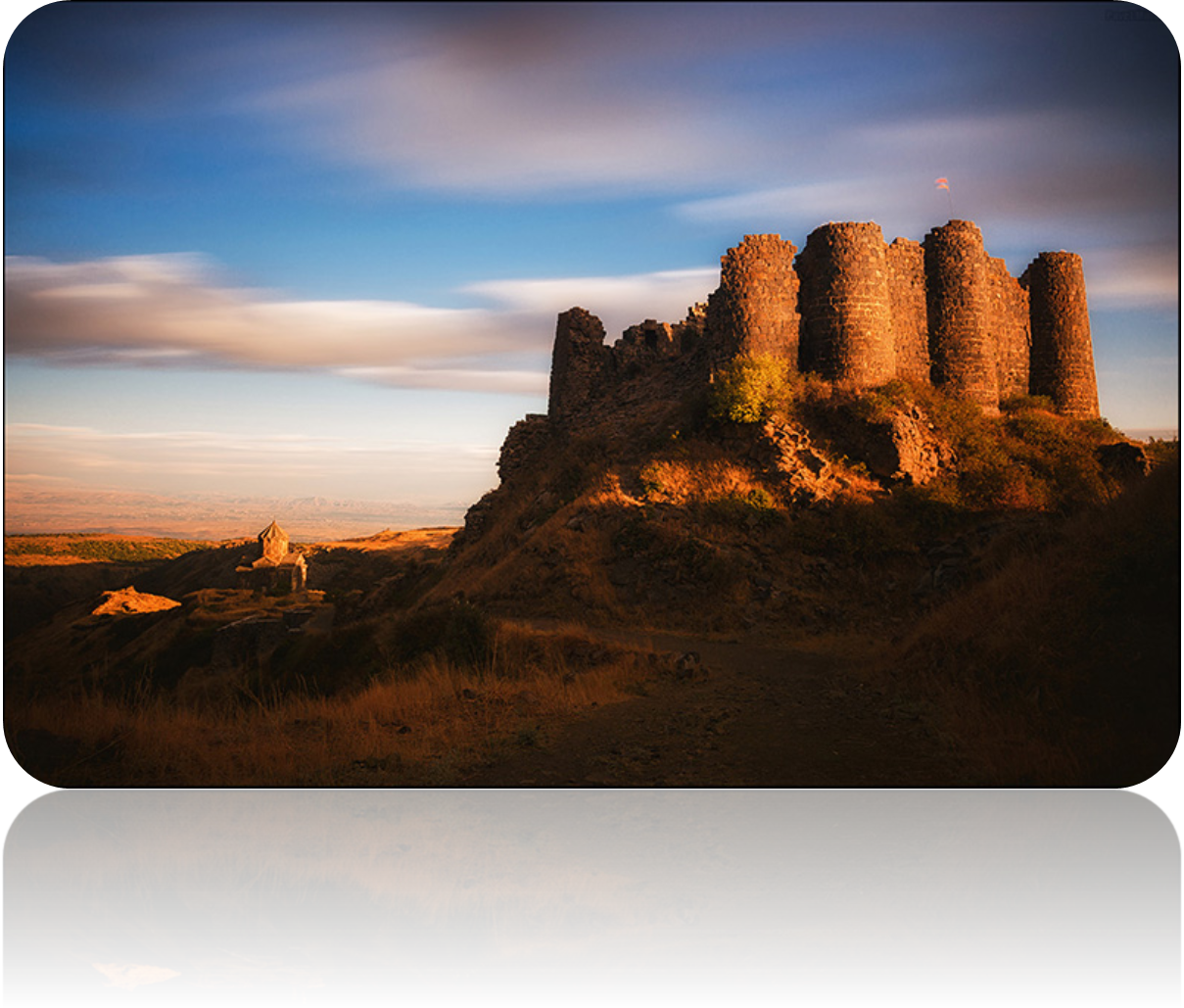
The architectural plan of the fort is triangular and is made of tuff, clay, wood and basalt. In addition to its main purpose of protection, Erbuni Castle was considered the religious center of the kingdom. The fort also has a large hall, which was the venue for important events in ancient times. This hall has color paintings that the restorers have been able to partially restore with modern technologies. Wall paintings are mostly red, cream, blue, yellow and brown. These paintings show subjects such as hunting, agriculture, cattle breeding and worship of God, which somehow show the ancient civilization of Urartu.
Opera House
Yerevan Opera Hall was built in 1933 by Alexander Tamanyan, a famous Armenian designer and architect. An excellent and unique opera house that includes two Aram Khachaturian concert halls with 1,400 seats and the Alexander Spandarian National Opera and Ballet Theater with 1,200 seats. An exceptional place where you can enjoy both ballet and musical performances, as well as symphonic and piano solos. Opera House is right in front of Azadi Square. There are many restaurants near this place that are very suitable for family and friends.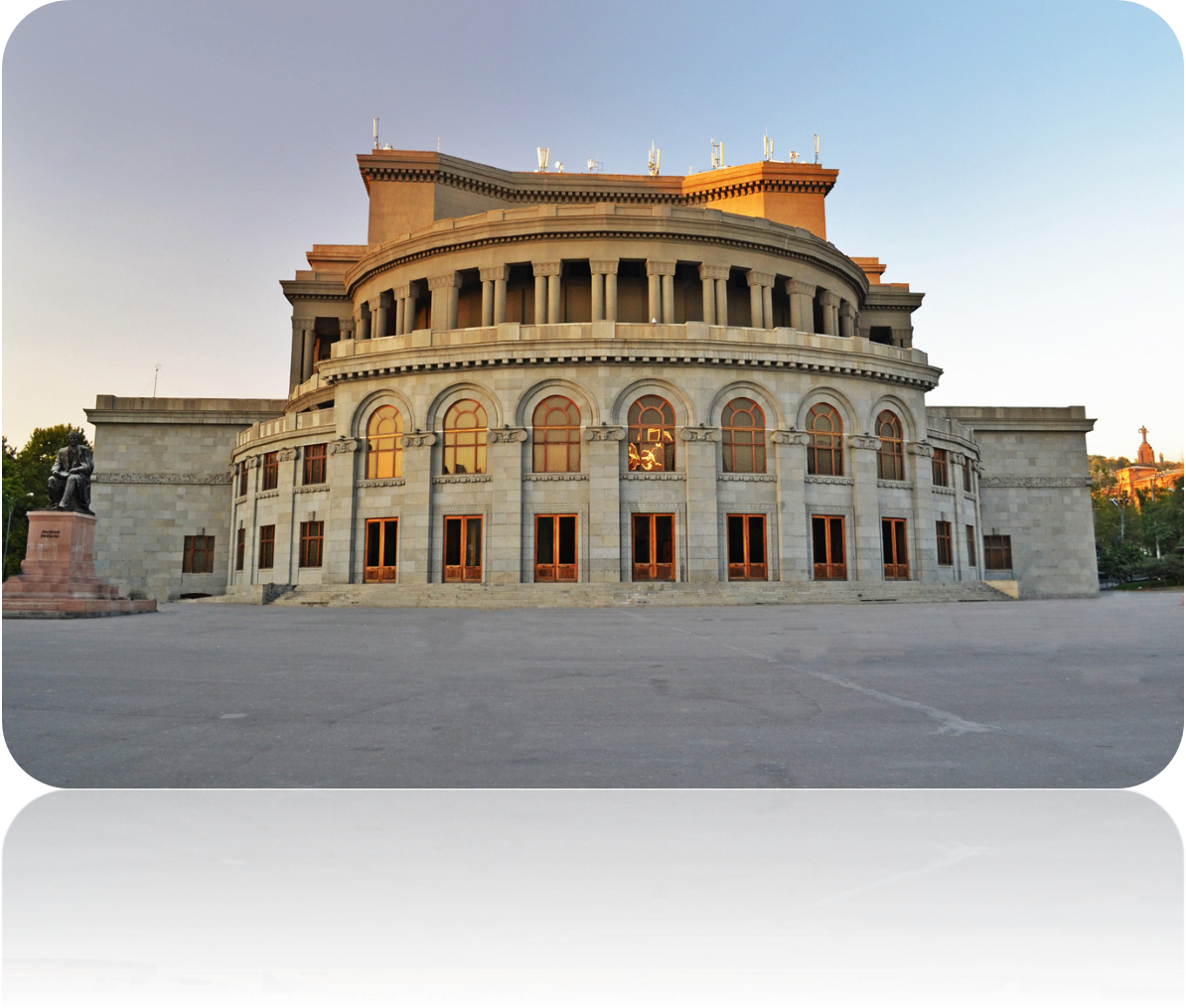
There is a large area near this hall where there are statues commemorating the great Armenian composers, Aram Khachaturian and Alexander Spandirian, as well as the famous poet of this country, Hohans Tomanian. Also, a statue and memorial of the famous Armenian composer Arno Babajanian is located a short distance from the Opera House.
Blue Mosque
The Blue Mosque, also known as the Blue Mosque, is a historical mosque in Yerevan that was built in the 18th century. It is called Blue Mosque because blue is the main color of the entrance and tiles. This historic mosque, which is another sight to see in Armenia, was never meant to be a luxurious mosque. Because it cannot compete with the mosques of Istanbul or Tehran, but it is still a beautiful building.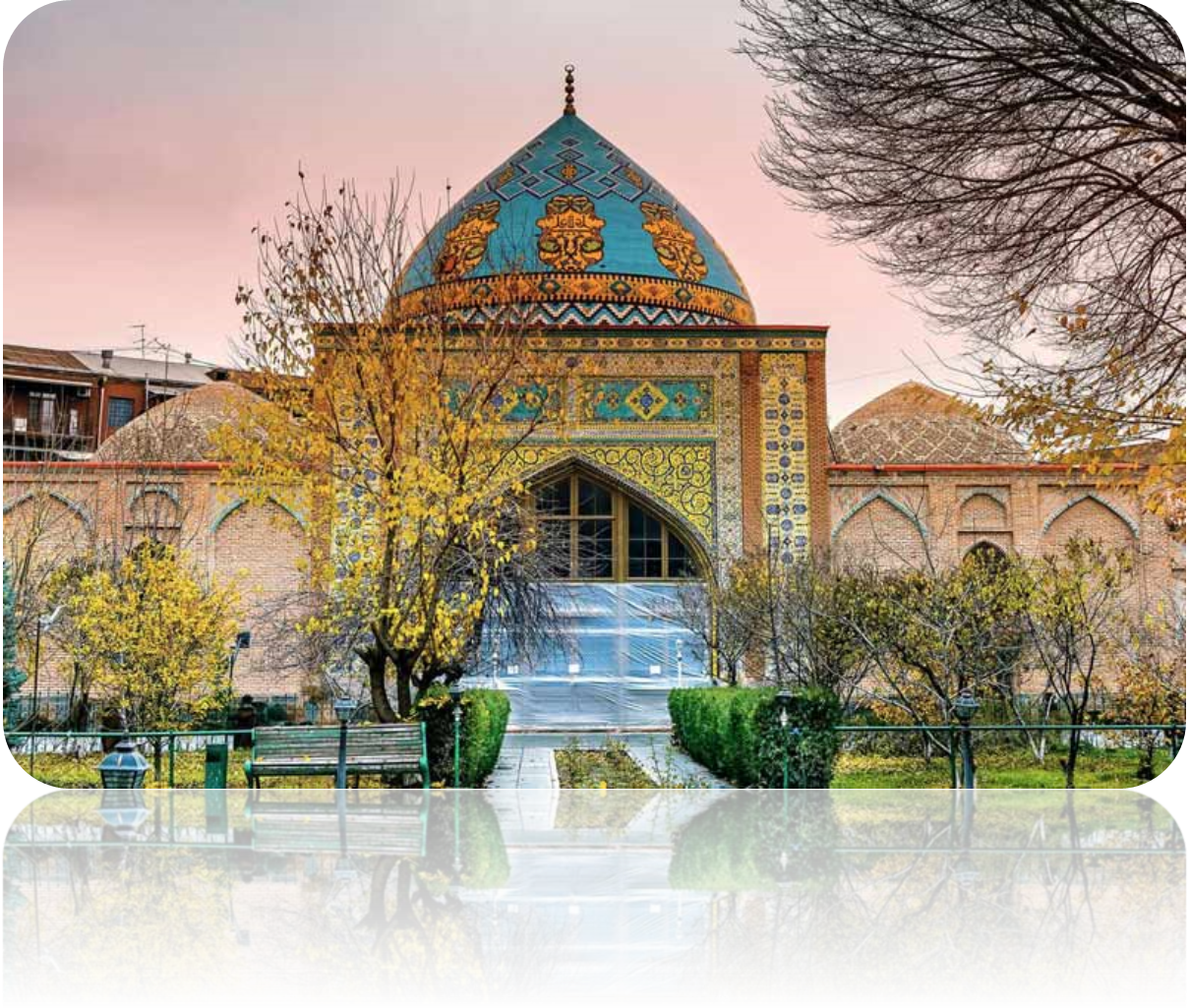
The construction of the Blue Mosque began in the 18th century during the reign of Iran over Armenia. This mosque is modeled on Iranian mosques and follows the traditions of the Twelver Shia branch of Islam. The Blue Mosque of Yerevan has more than 6,500 square meters of main land, as well as a seminary, an inner courtyard and a meeting hall. Currently, it is the only comprehensive mosque in Armenia; The rest were abandoned or destroyed.
Ancient library of Yerevan, a library as old as history
This library is one of the most important literary treasures of not only Armenia but the whole world. A foundation called Matnadaran has collected ancient manuscripts in Armenian, Persian, Greek, Arabic, Syriac, Indian, etc. 17000 special manuscripts can be seen in this library. If until now you only read in history books that the kings gave orders, now here you can see some of the orders of the Safavid kings in the king's own handwriting.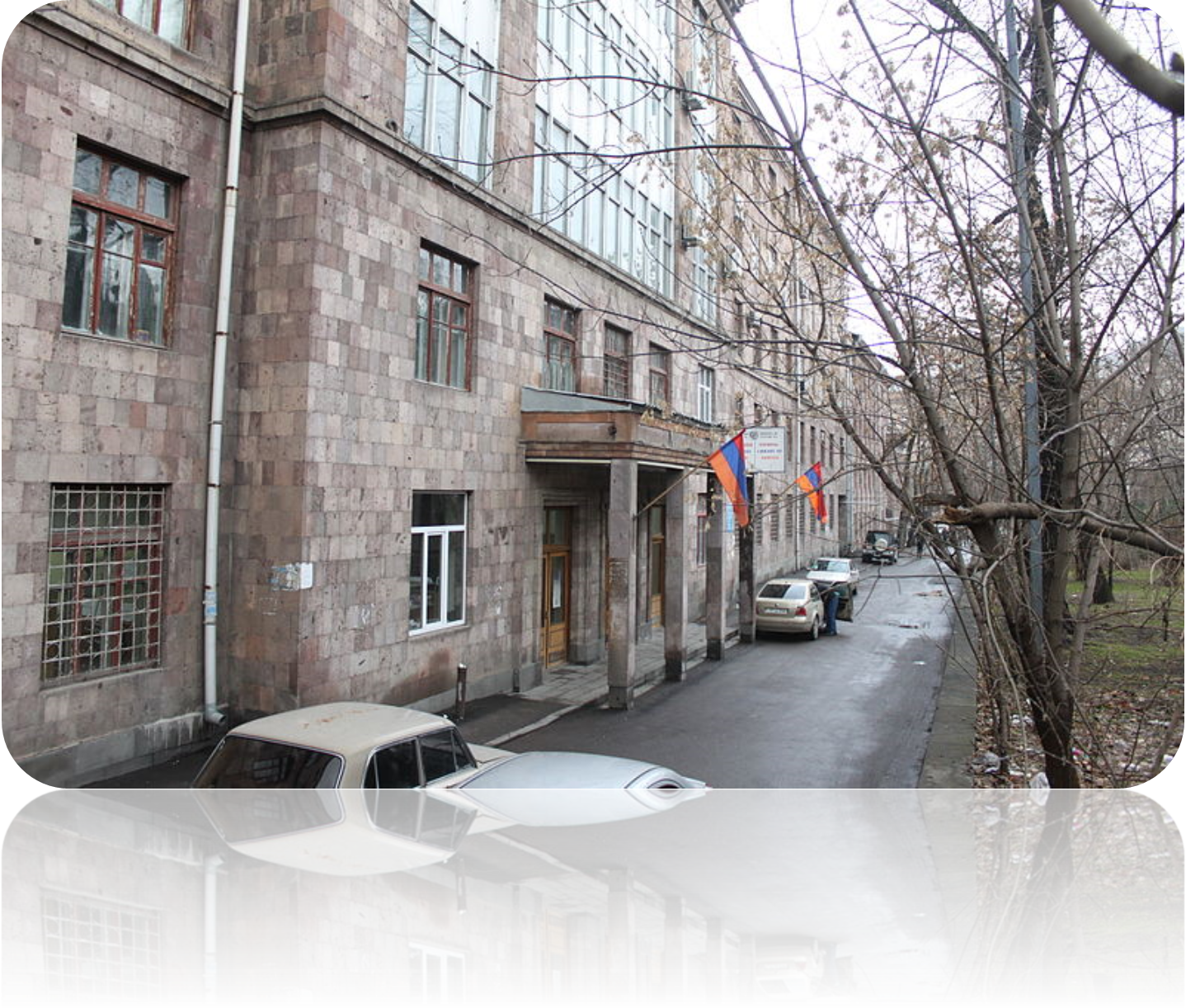
In front of the building of the library, you can see the statue of Mashtots, who is teaching the alphabet to a teenager; Mashtots is the one who made the Armenian alphabet. After the stairs, you will reach the big copper door that will lead you into the library. Inside the museum, ancient manuscripts from Romans, Iranians, Arabs and Armenians can be seen. Outside the library are inscriptions and tombstones that were collected from the ancient areas of Yerevan and brought here.
Garni Temple, the only relic of pre-Christian Armenia
The Garni temple stands tall in the heart of the mountains with all its glory, and its view reminds you more of Roman buildings. The Garni Temple is the only relic left from pre-Christian Armenia. That is why it has a special place among the historical works of this country, to the point where it was on the banknotes of this country for many years. After the arrival of Christianity in Armenia, most of the churches were built on the monasteries and shrines of Mehr worship, and today there is no news of those shrines; As with the arrival of Islam in Turkey, mosques were built on top of all churches.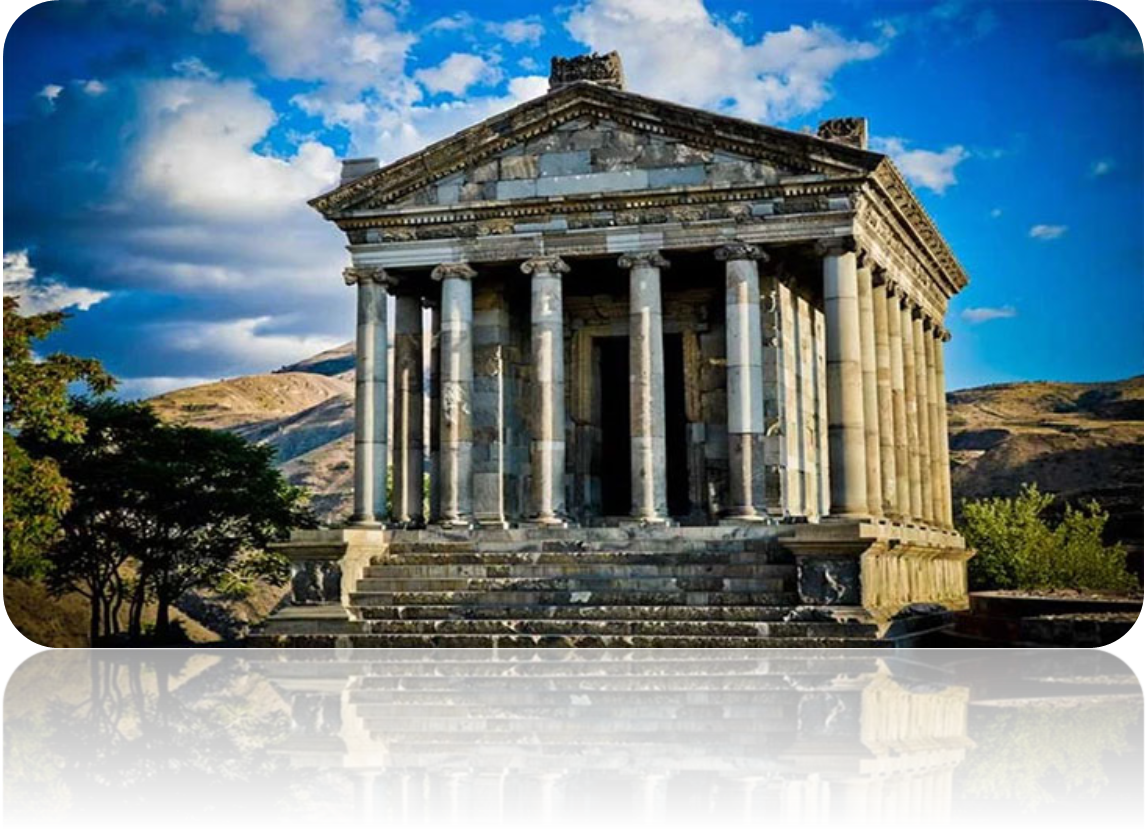
Mehr worship is a religion whose followers worshiped "Mitra", the god of ancient Iran. The subtleties of Henz's architecture are also left on the building stones. Garni Temple is located 36 km from Yerevan in a village called Garni. To see this temple, take a taxi or go on a tour.
Gaghard Monastery, a monastery in the heart of the mountain
Geghard Monastery is one of the most magnificent sights in Armenia, which is located around Yerevan. This monastery is carved out of rock in the heart of the mountain and is so valuable that it has been included in the UNESCO World Heritage List. The church was built in two different periods. In the first period, the Zakarian family, who were among the rich and royal families of Armenia, built the outer church. In the second period, another family called the Prussian family bought this property from the Zakarians and built the inner church.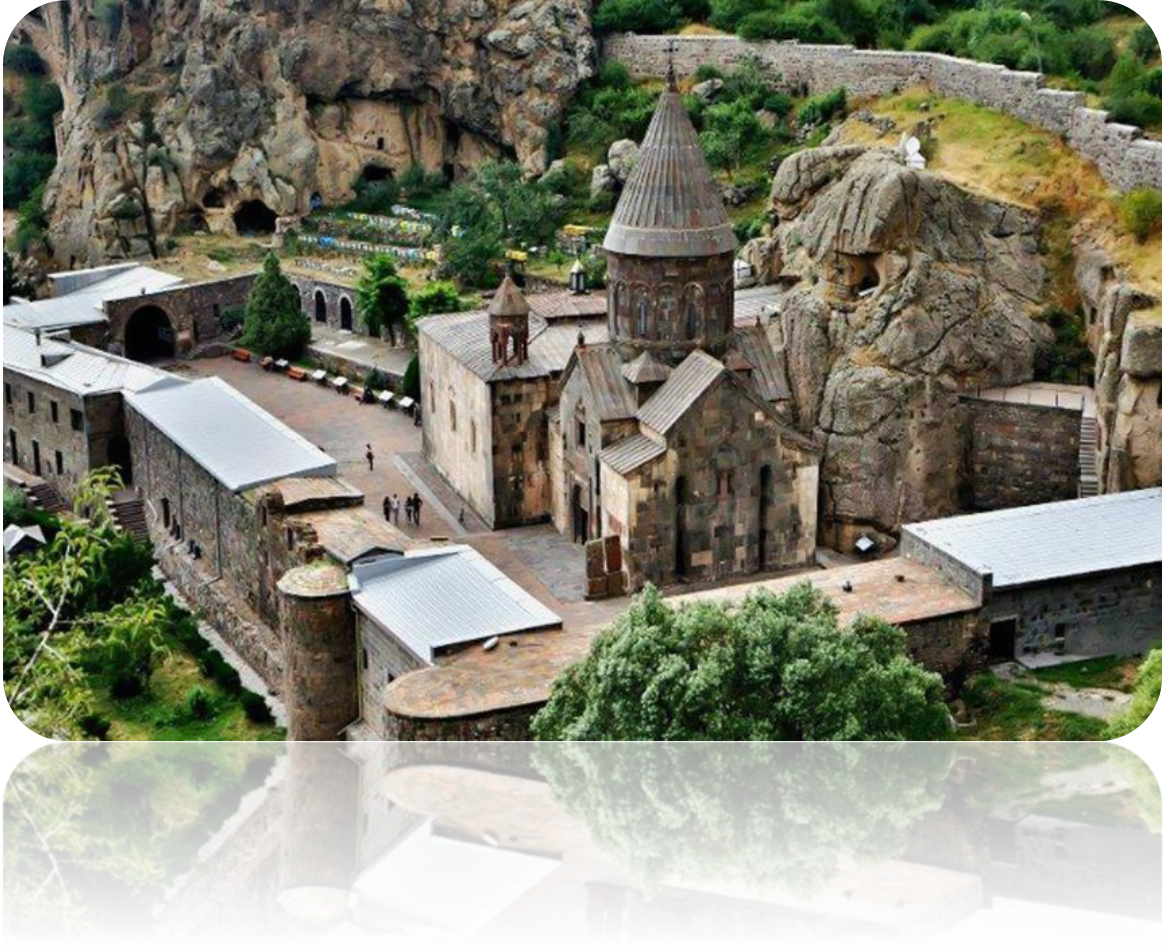
"Geghard" means the head of a spear and refers to the story of Christ, who was wounded in the side with this spear after being crucified. This spear used to be seen in this church, but now it has been transferred to the Holy Treasury of Echmazdin Cathedral (in the city of Vagharshapat). Echmazdin is said to be "the first cathedral in the history of Christianity", which was also called the High Church in the past. Och is a Turkish word meaning three; Och Church means three churches.
Stunning architecture
Carved lions, which are symbols of the Zakarian royal family, a pool filled with spring water, another small church, which is the tomb of Prussian Prince Papak and his wife, attract attention when visiting this great church. To the right of the entrance steps is another rough-hewn church that is acoustic and of stunning dimensions.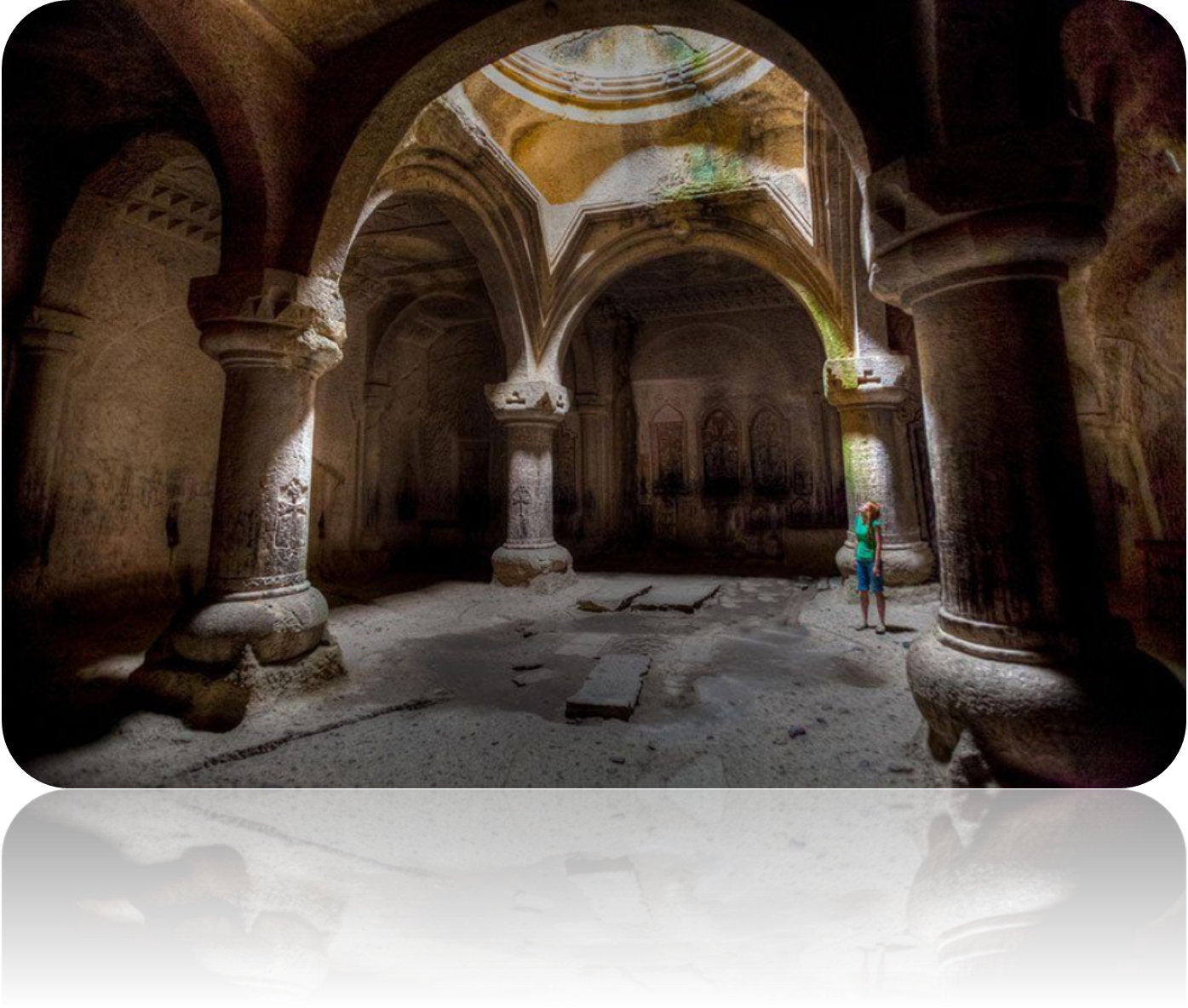
Armenian museums for a cultural tourism
Normally, museums are a symbol of the culture and tradition of countries, and any country cannot be known without museums. Armenia is no exception to this rule. The museums of Armenia reflect the authentic Armenian culture and the works of art of the prominent figures of this country. In the following, we will review some famous museums in Armenia.
Kafsjian waterfall, sculpture park and contemporary art museum
Kafsjian Waterfall, Sculpture Park and Museum of Contemporary Art are one of the famous museums and sights of Armenia. Also, this collection is known as the foundation of Kafsjian Museum. Kafsjian, Yerevan Art Museum, is located in the central district of Kontorne, near the Yerevan Waterfall. The museum, which has a series of grand staircases with fountains, rises from Tamanyan Street Gardens and the pedestrian area.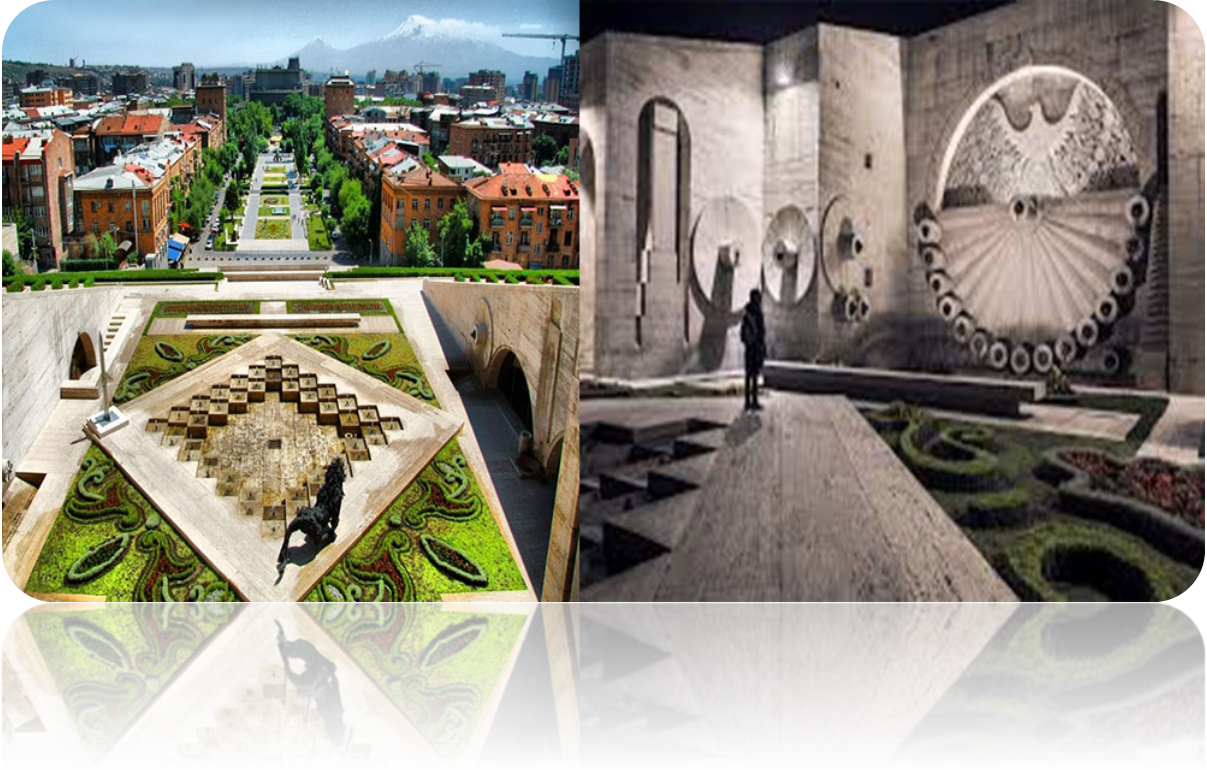
This museum from its founder, Gerard L. Kafsjian is inspired. It also offers various exhibitions from Kafsjian's contemporary art collection. This museum was opened in November 2009 in Yerevan, which, in addition to the exhibition of unique works of modern art, offers a diverse program of lectures, films, concerts and numerous educational activities for adults and children. Since its opening, more than one million people have visited this center annually. In addition to the museum, this historic complex also includes a sculpture park, which is a small green space and part of the museum, located in the northern part of the opera house. The statue of world famous artists and people like Botero is installed in this park. You can also visit waterfalls, fountains, etc.
Matanadaran Museum
Matnadaran Museum (meaning book repository) is a valuable source of recorded history of Armenia and the main repository of ancient manuscripts in Yerevan. In general, this museum is a research institute and the largest library of Armenian manuscripts in the world. This valuable museum, as one of the sights of Armenia, was established in 1959 and based on the collection of the Armenian National Church, which was previously held in Echmiadzin. Currently, there are several manuscript repositories around the world, but unfortunately, thousands of Armenian manuscripts were destroyed during the genocide in the Ottoman Empire.
Throughout the history of the center, Armenia has been a battle for great powers, and due to this, a lot of damage has been done to its cultural and historical works. Currently, about 23,000 manuscripts are kept in this museum, which are exhibited in different halls and sections. Of course, not all of these manuscripts are related to Armenian history and there are also manuscripts in Arabic, Syriac, Greek, Indian, Georgian and Hebrew languages.
Sergei Parachanov Museum
Sergey Parajanov was a talented writer and creator of several masterpiece films that earned him worldwide acclaim. The Shadows of Forgotten Ancestors (1964), The Color of Pomegranates (1969), The Legend of Suram Castle (1985) and Ashiq-Karib (1988) are examples of the works of this famous artist.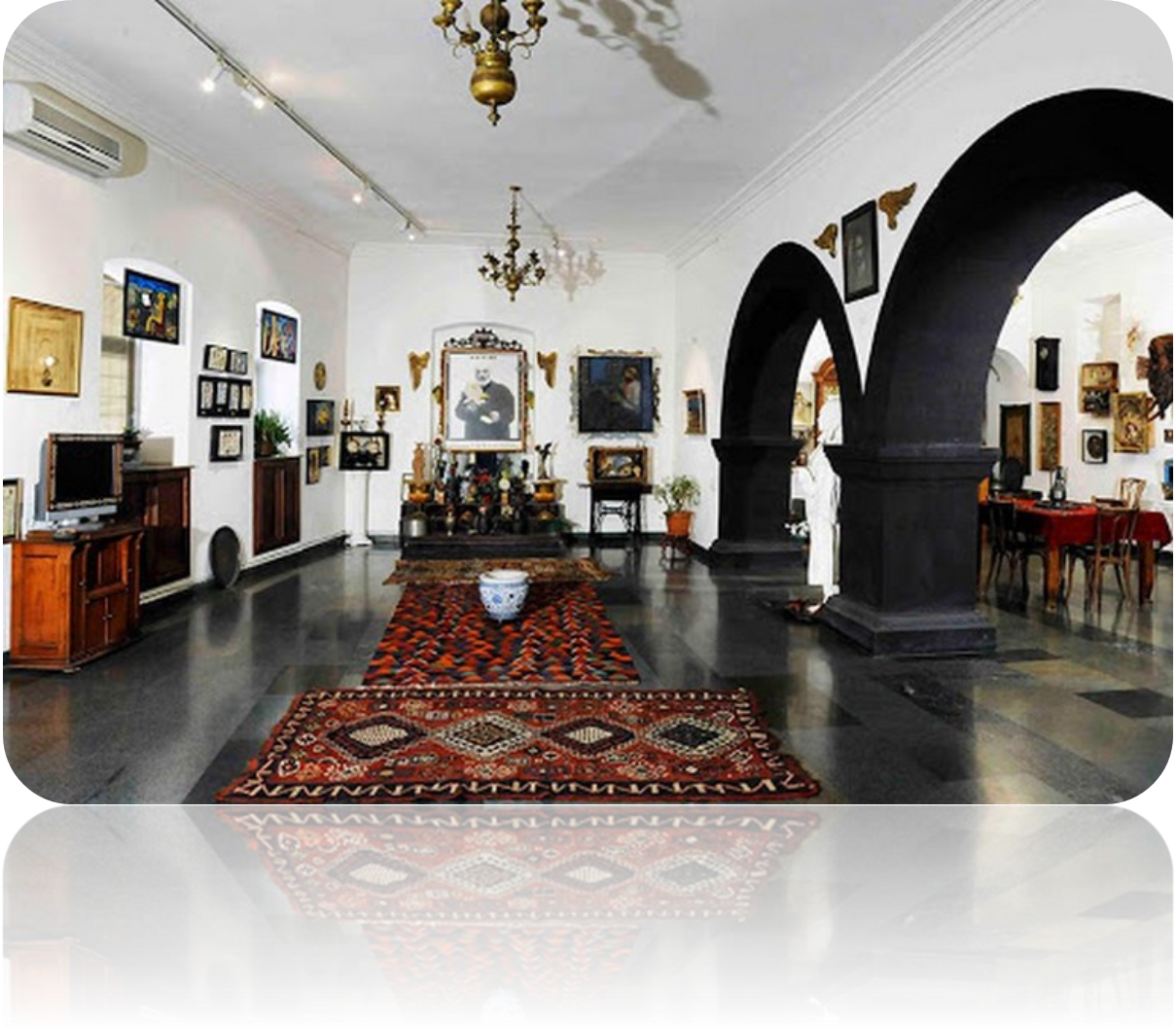
Sergey Parajanov Museum, one of the sights of Armenia, was established by the Armenian government in 1988 and after the first exhibition of his artworks in the Museum of Folk Arts of Armenia. This museum initially consisted of 600 works of Parajanov. Collections, flat and three (3) dimensional collages, paintings, dolls and film designs, furniture and personal belongings that were transferred from Tbilisi to Yerevan during his life. Over the years, it was added to the subjects in the museum and today it has reached 1500 works. Parajanov Museum is one of the most popular museums in Yerevan.
Sarian Museum
Martiros Sarian is one of the greatest artists of the 20th century and the founder of the Armenian national school of contemporary painting. Sarian was born on February 28, 1880 in Nakhchivan. As a prominent national figure, he headed the Union of Armenian Artists from 1945 to 1951. His works are preserved and displayed mainly in the National Gallery of Armenia, as well as in the best museums of the Commonwealth of Independent States, the United States of America, France and other countries.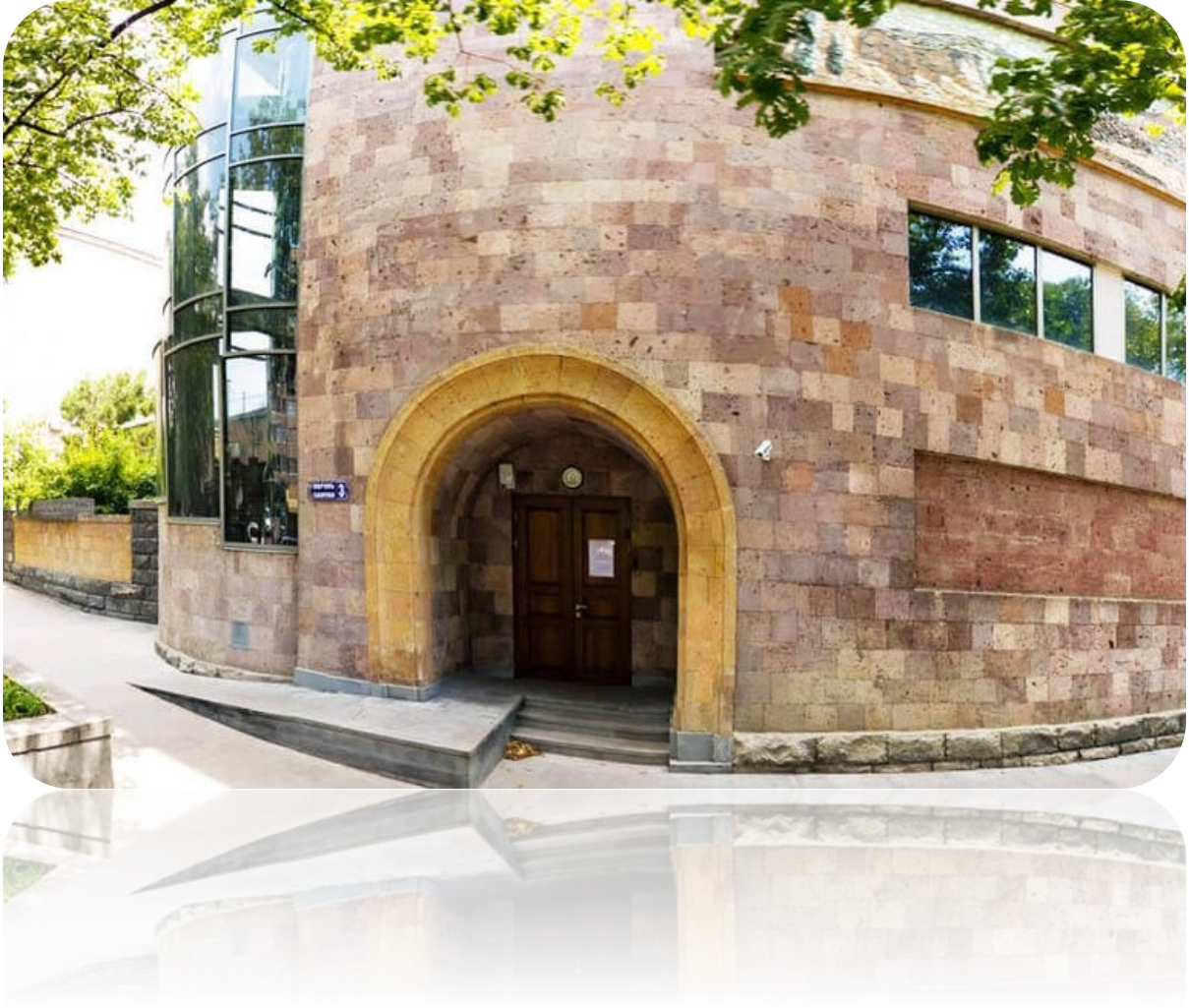
Martiros Sarian House Museum was opened in 1967 during the artist's lifetime. This great artist lived here from 1932 until his death in 1972. The Sarian Museum House consists of a mansion, a gallery and a sanctuary of the entire collection, the studio where this great master made his paintings. This artist donated 50 of his works to the museum at the time of its opening. Currently, the museum consists of about 300 paintings. Sarian was known as the Master of Color because of his unique understanding of the world. The artist's canvases were literally soaked in warm colors and national motives of his beloved Armenia. As this great artist said: Man is nature, nature is a man, and therefore there is no death. Indeed, Sarian lives on in the heart of every Armenian as long as his paintings exist.
History Museum
The Museum of History is another must-see in Armenia, museums in the fields of archeology, numismatics, ethnography, modern history and restoration in Armenia. This national collection has 400,000 objects and works and was established in 1920. 35% of the main collection is related to archeology, 8% of the collection is related to ethnography, 45% is related to numismatics and 12% is the collection of documents. This museum is considered the national museum of Armenia and is located in Republic Square of Yerevan.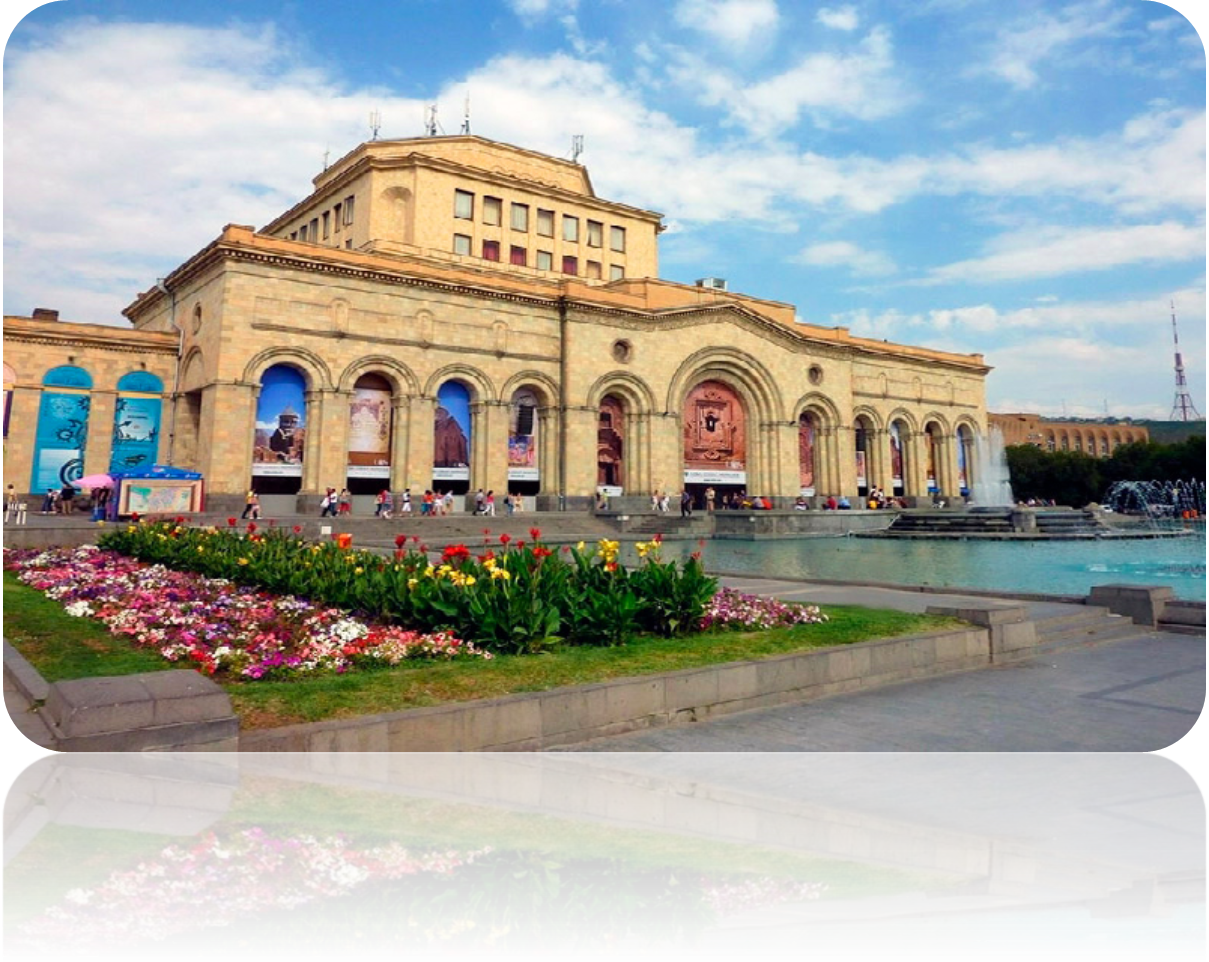
The History Museum of Armenia continuously updates the works in its collections with new findings at the ancient sites of Armenia by the Institute of Archeology and Ethnography and the National Academy of Sciences of Armenia. Other items are obtained through purchases and donations. This museum represents an integral image of the history and culture of Armenia, from prehistoric times to the present day.
Collections
A large collection of bronze objects from the 2nd to 3rd millennium BC.
The historical and cultural heritage of Urartu, consisting of cuneiform inscriptions, bronze statues, wall paintings, painted ceramics, arms and weapons with sculptural decoration, by Karmir Blue, Arin-Bard and Argishti Khinili.
Cuneiform inscription of 782 BC about the founding of the city of Erbuni by the Urartian king Argishti I.
A collection of objects reflecting the history of transportation, wooden chariots from the 14th and 15th centuries BC.
A collection of gold, silver and copper coins from Miletus, Greek, Macedonian, Seleucid, Parthian, Roman, Sassanid, Byzantine, Arab and Seljuk that have changed hands in Armenia.
A collection of Armenian coins, issued in Hayek Minor, 3rd century BC to 150 BC, coins of the Artaxiad dynasty of Armenia 189 BC to 6 AD; The Kingdom of Kyurike in the 11th century and the Armenian Kingdom of Cilicia are examples of valuable works in this museum.
Museum of History of Yerevan, an extract of the history of this land
Maybe this old museum is the best place to browse the history of this city and land. Yerevan History Museum is one of the oldest museums in Yerevan, which was kind of like a house next to another, and after changing 5 houses, it finally settled in this beautiful building next to Republic Square. In this 3-story museum, you can see 9,000 works from different historical periods, from ancient books and traditional objects to paintings, as well as the first telephone and video camera and war equipment. The problem that most tourists get from this museum is that the explanations of the objects are in Armenian, and those who do not know this language naturally cannot understand the writings. It is better to visit this museum with an experienced tour leader to know the history behind each work.
First floor of Yerevan History Museum
The first floor tells more about the culture and traditions of Armenia. Of course, there is also a permanent carpet exhibition that displays the carpets of this region. On the same first floor, it is possible to hold two temporary exhibitions, where handicrafts, books and porcelain exhibitions will be held.
The third floor of Yerevan History Museum
As the floors go up, the objects become older and more special. The third floor is the floor of old stones and the age of bronze and iron. The first tools that mankind made of iron and bronze are placed in this floor. Very old stones dating back to BC and the relics of the Orator kingdom, which once ruled over Lake Urmia, Lake Van and the highlands of Armenia, are now all gathered on the third floor of this museum.
Armenian Genocide Museum, a story of bitter times
The Armenian Genocide by the Ottoman Turks has hurt the heart of history. That is why, wherever Armenians settled their lives, they built monuments in memory of the lost. You can see one of these buildings in Vank Church of Isfahan. But the biggest one is the Armenian Genocide Museum in Yerevan. Perhaps one of the most painful and magnificent sightseeing areas of Armenia is right here.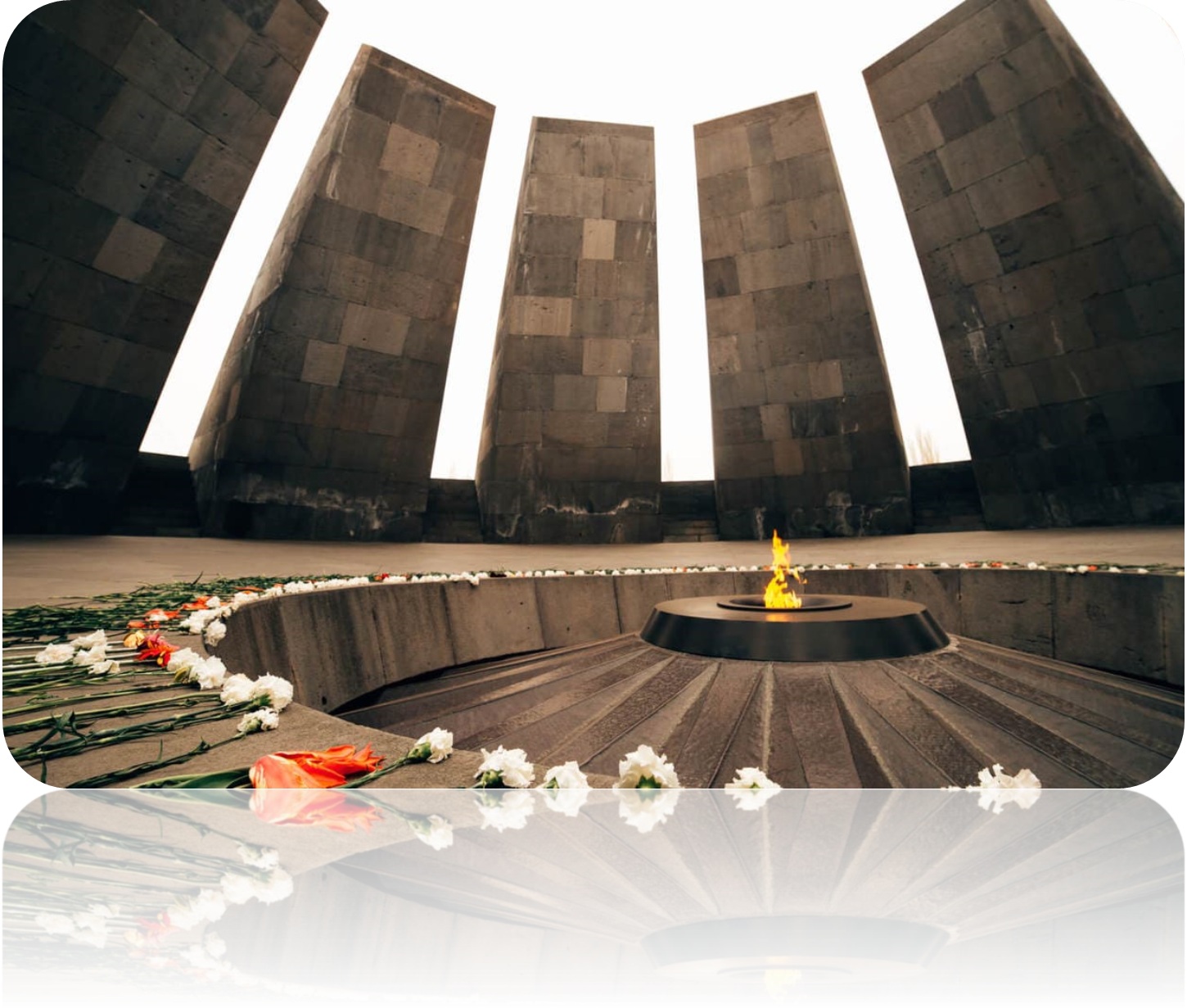
The Armenian Genocide Museum is built on the site of an old castle, on a hill called Tate Sernakabard and next to a river called Hrazdan. The building itself is made of 12 converging pointed columns and a 44-meter column. The twelve columns represent the 12 provinces where Armenians were killed, and the 44-meter column represents the rebirth and resumption of Armenian life. In the middle of these pillars there is a fire, which they call the eternal fire, and they consider it a symbol of the inextinguishable spirit of Armenians.
Sights inside the museum
Various photos and documents are displayed in this museum and the explanations are in three different languages. If you want to see the whole museum carefully and know the details of this historical event better, set aside two hours to visit this museum.
The building of the museum was entrusted to famous Armenian architects, Artur Tarkhanian, Sashore Kalashian and Hohans Kacharian, and its construction was completed in 1967. Every year on April 24, which coincides with the Iranian month of May, Armenians from all over the world come to this memorial to keep alive the memory of the lost by donating flowers and paying tribute.
Museum of wooden works
In one of the beautiful areas of the capital city of Yerevan, on Parunyan Street, the State Museum of Wooden and Inlaid Works is located, which is considered one of the must-see places in Armenia. This museum was founded in 1977 by Albert Stepanian, Minister of Wood Industry and Vanik Shrambian, who had collected pottery, carpets, metals, ladles and spoons for years. Over time, the museum was enriched by adding new specimens, so that today it has 25-30 collections with about 3,000 exhibits.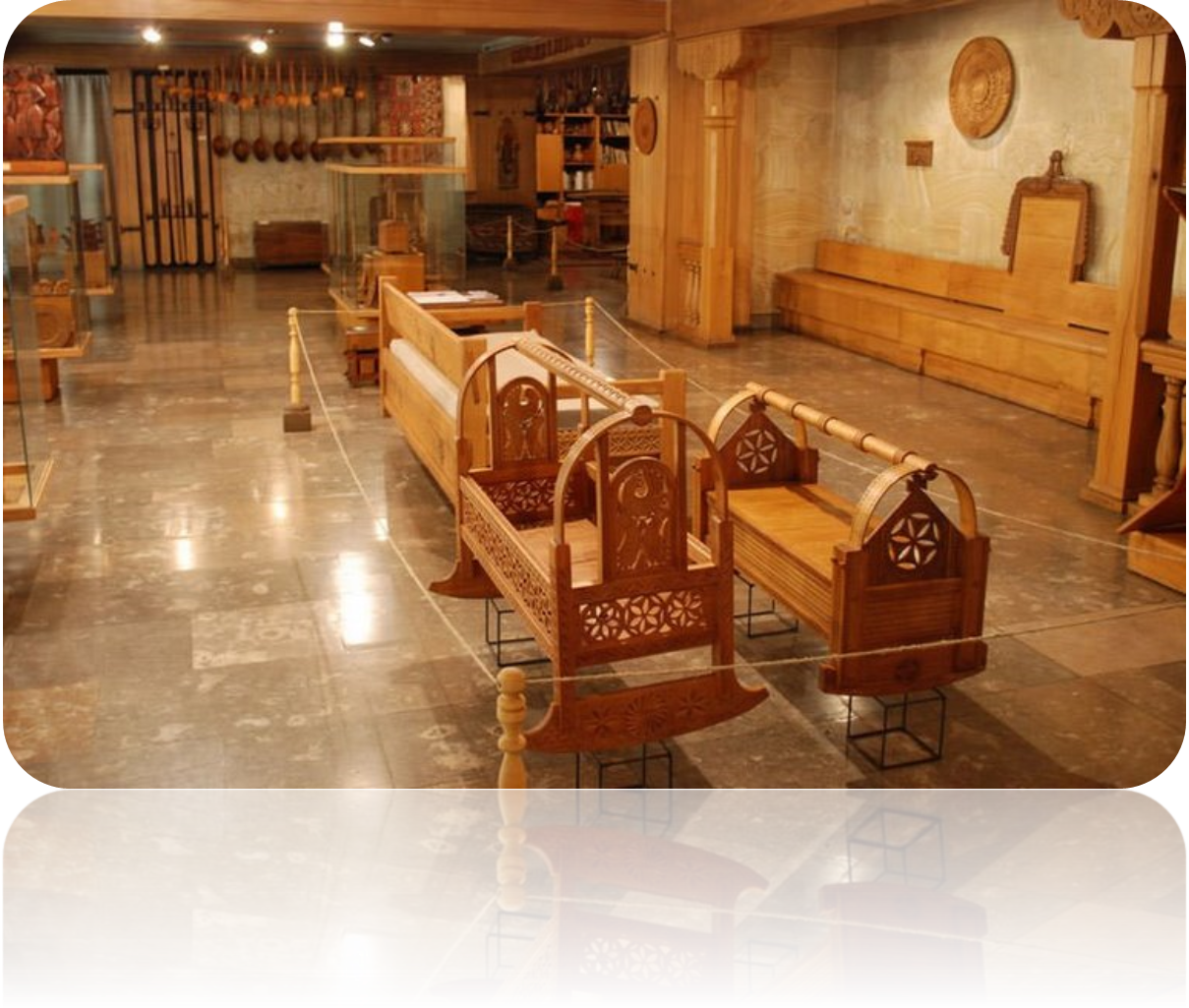
This exhibition consists of three parts, in which, in addition to the works made of different types of wood, other works such as carpets and Armenian salt cellars and tools such as wooden shuttles for making nets, ornaments, bars for checking dough and plastic parts can be seen. did The museum exhibition is decorated with delicate and unique carvings and its columns are decorated with birds. Molds and spindles, inlaid cradle and sofa in the center of the exhibition attract the attention of visitors. The museum also restores wooden artifacts. Among these objects are carved trays, cigar boxes and wine jugs. Many book covers, vases, pots and pencil boxes can also be seen there. One of the important parts of the museum exhibition is the wooden sculptures.
Nature tourism in the parks of Armenia
Nature and nature tourism always have their fans. Many tourists travel only to visit the nature of the destination. The beautiful nature of Armenia is one of the tourist attractions of this country, which attracts many travelers and tourists every year. Here we are going to introduce some famous parks in Armenia.
Victory Park and Monument
The construction of this park began in the late 1930s. After World War II, this park was renamed Victory Park to commemorate the Soviet victory over Nazi Germany on the Eastern Front of World War II. Finally, after this war, Victory Park was opened on November 29, 1950, on the 30th anniversary of Armenia's Sovietization. On the same day, a 17-meter-high copper statue of Joseph Stalin designed by People's Artist of the USSR Sergei Merkurov was erected in the park.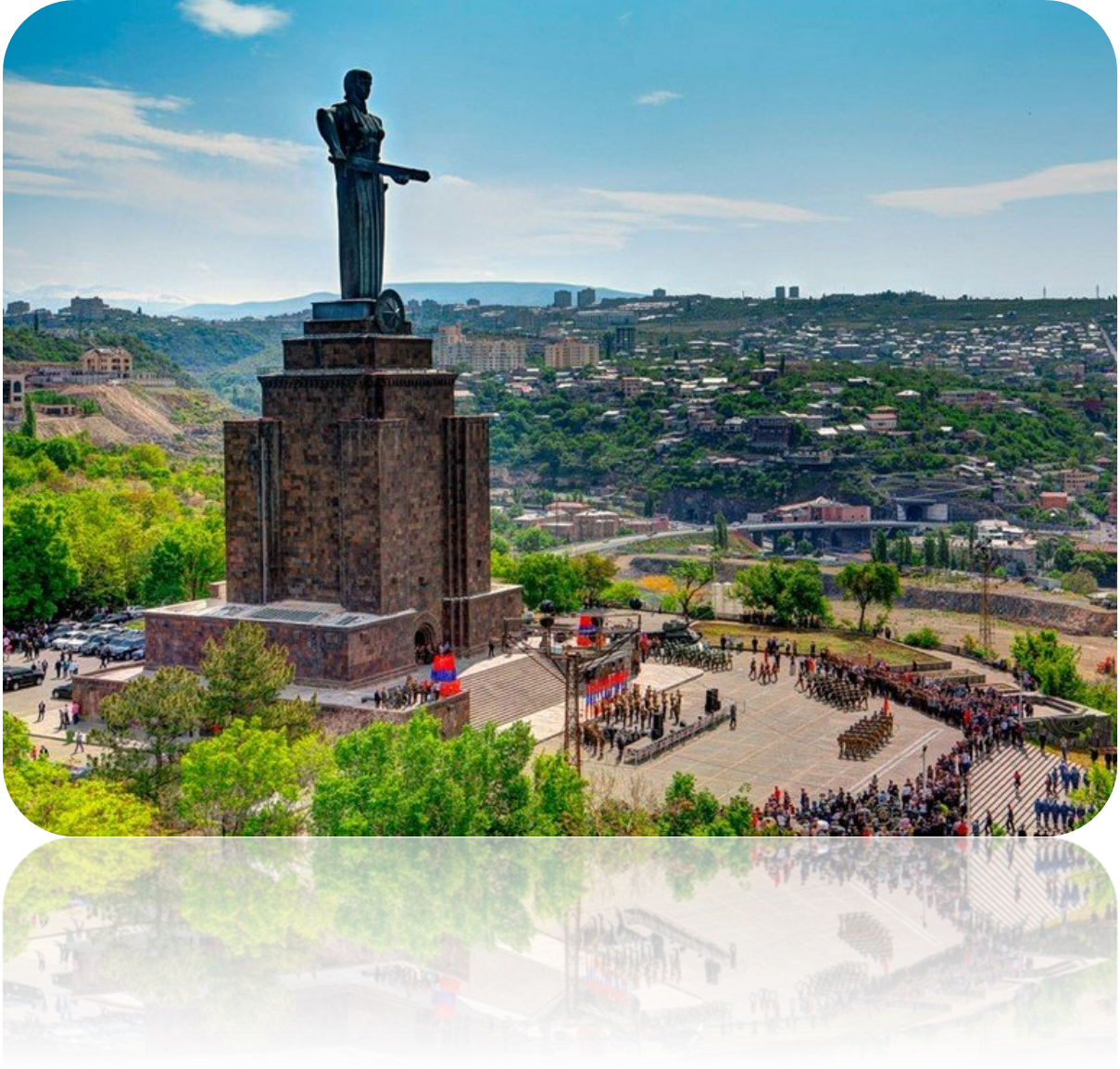
In 1962, the statue of Stalin was destroyed and the memorial statue of Mother Armenia was designed and replaced by the architect Ara Harutoyan in 1967, and a museum devoted to the role of Armenia in the Great Patriotic War was opened under the statue's base. However, in 1995, this museum became the Armenian Military Museum under the management of the Ministry of Defense. In this park there is a small amusement park and an artificial lake Arvik, which was designed by the architect Hovhannes Hakopian. Between 1983 and 1985, the park was closed for major renovation works. On May 9, 1985, the Alley of Heroes and the Tomb of the Unknown Soldier were inaugurated near the Mother of Armenia complex, on the 40th anniversary of the Great Victory in World War II, and in 1989, a new carousel in the amusement park replaced the old carousel.
children park
Children's Park or Children's Railway Park dates back to the Soviet Union period in the city of Yerevan, Armenia. This beautiful park has an attractive train that is very old and dates back to 1937. These trains have been in this park since then and despite being old, they are healthy and fresh and continue to operate. This train goes around a 600-meter track in the park and returns to its original location. On the way of the train, there are some small tunnels and you can see beautiful trees along the way, as well as some small springs and the beautiful river of the park which is on the way of the train and is one of the beautiful effects of this part.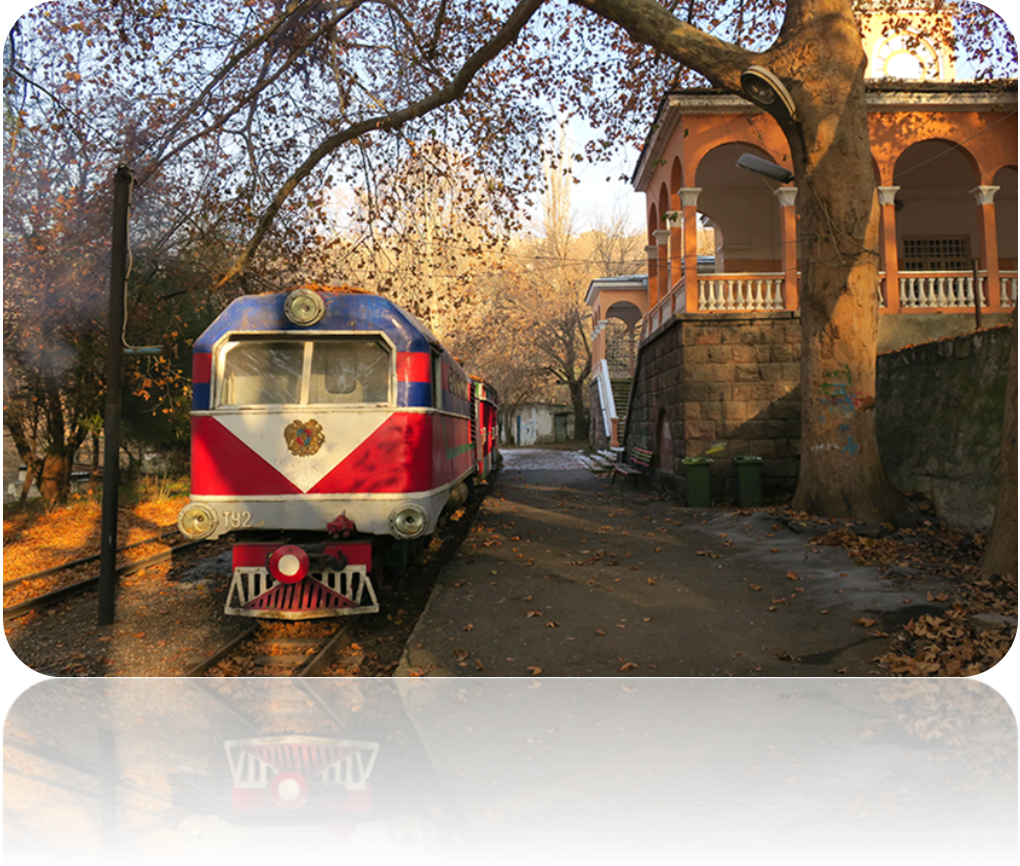
The purpose of building this park was education and creating conditions for learning related skills in the field of railways, which itself became a unique work during the Soviet Union period.
Lovers' Park
This park dates back to the 18th century, which is known as Kozren Park in the Kozren area of the northwest suburb of old Yerevan. After World War II, it was redesigned and renamed Pushkin Park as part of the celebration of the 150th birthday of the famous Russian poet Alexander Pushkin. Then in 1970, the park was named Barkamotion (friendship) as a tribute to the friendship of all the member states of the Soviet Union.
This park, which is another sightseeing place in Armenia, was renamed to Yerevan Lovers Park in 1995, following the independence of Armenia, by the decision of the head of civil representatives of Yerevan City Council, and because it was a favorite park of many couples. did After a complete renovation between 2005 and 2008, Yerevan Lovers' Park was opened in November 2008. In this park, there is also a small amphitheater with a capacity of 215 seats and a stage of 100 square meters, named after Robert Bogoosian. The following events are held in the park:
Celebrations of national holidays and holidays of Armenia
Screening of open-air films of the Golden Apricot International Film Festival
Outdoor reading festivals
Music festivals
Live concerts
exhibitions
Musical fountain
One of the attractions of Republic of Armenia Square is the musical fountain that attracts tourists from all over the world. This dancing fountain, which is also known as the singing fountain, was opened in 1968 to celebrate the 2750th anniversary of Armenia. At that time, it was the only fountain of Soviet dancers, and every evening for two hours, people were welcomed with ear-pleasing music. From late May to October, the musical fountain is lit every day and plays soothing music to create a relaxing atmosphere for visitors. From 9 to 11 at night you can enjoy the music and celebration of light and color of this fountain.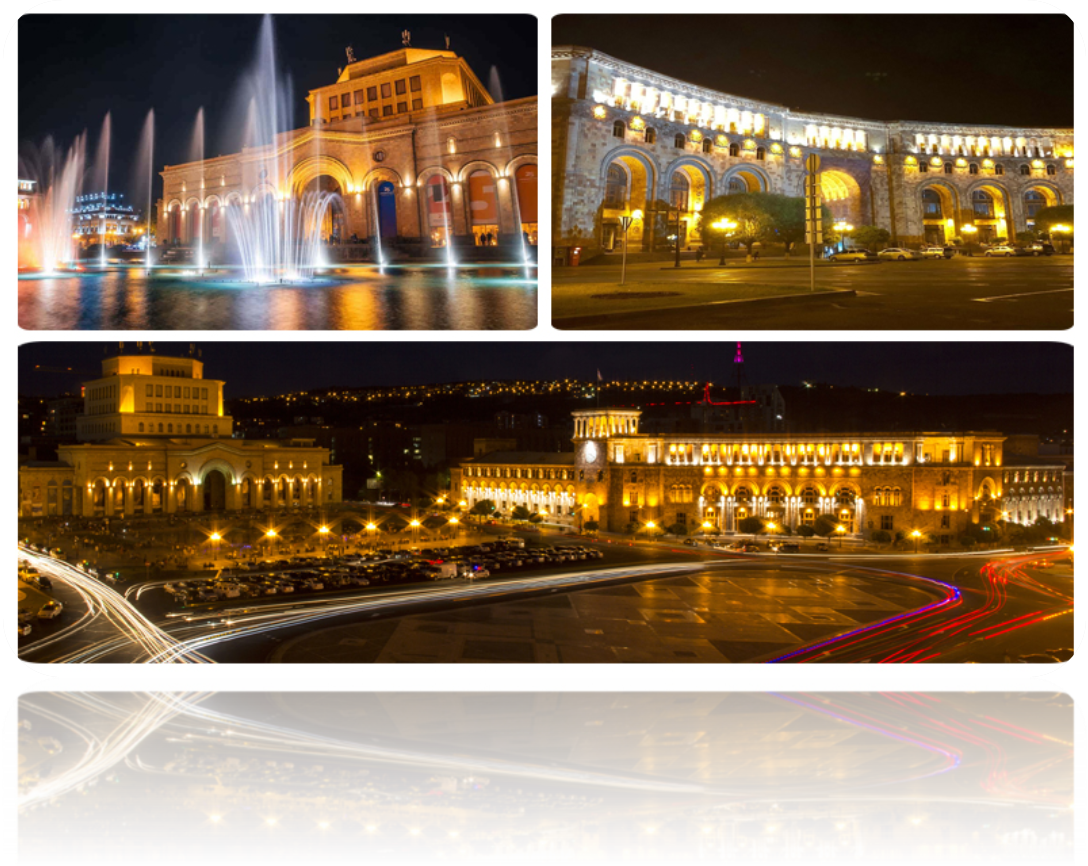
World classical masterpieces, national music and pop and rock music are often used for broadcasting. The show of color and dance of light and water always ends with the music of "Eternal Love" by "Charles Aznavar". The color of the water features changes according to the rhythm of the music and gives it a special harmony and beauty. If you are a traveler to Armenia, we suggest not to miss visiting this fountain.
Lush Cascade area
The green Cascade area of Yerevan is the beating heart of this city. A place where young people gather. All outdoor concerts are held in this place, where you can have the best view of Yerevan. The construction of this area started in 1971 and lasted until 1980. The final and current form of this beautiful building is in the form of a staircase, which was completed in the last stage of renovation in 2009. Thanks to the investments and connections of an Armenian-American art dealer and collector, Cascade has evolved into an open-air modern art museum.
The works of artists such as Fernando Botero (Colombian sculptor), Lynn Chadwick (English sculptor), Barry Flanagan (Welsh sculptor), Stanislav Libensky and Jaroslava Brichtova (Czech couple), Paul Cox (English sculptor) and many other artists in They exist in this area and give passers-by a chance to enjoy these masterpieces on a morning or evening walk. If we look at Cascade as a building, it is a multi-story building. Each floor exhibits distinct works of art and conveys a different mood. There is also an interior hall on each floor that has various contemporary works of art. There are more museums inside the building, including the Open Store of the Museum of Modern Art, temporary exhibitions of famous Armenian and international artists, and above that you can find the Swarovski Crystal Palace Museum.
Cascade has always been a favorite not only because of its valuable and excellent works of art, but also because of the fantastic view of Yerevan and Mount Ararat standing behind the pink buildings. Cascade has also become a place for friendly parties, lively conversations, and fruitful business meetings due to its cozy cafes. Cascade Steps is the perfect venue for jazz concerts and traditional Armenian dance masterclasses.
Swan Lake, natural beauty, history and recreation
The image of Armenia's Swan Lake remains just like a postcard. But whether this lake is as beautiful up close depends on whether beauty is more defined for you in winter or in summer. Of course, Svan is not the only lake in Armenia and it is only one of 100 mountain lakes in the heart of this small country, but it can be said that it is the most famous.
Going to Swan Lake is an arrow with three signs, it has beautiful nature, historical monastery and various entertainment. The monastery that we see today on a peninsula on Swan Lake was on the island in the past, but the water has slowly receded and the space has become the present day. This monastery was built by Princess Maryam, who was the daughter of Ashut I. To reach the monastery itself, you have many steps ahead of you, but on the way of these 235 steps, there are large terraces from which you can stand and watch the swans and take a breath.
Since Swan Lake is located in high altitudes, it is natural that it has a colder winter. If you don't have a good relationship with snow and cold, it is better to visit Swan in summer and in July and August.
Swan amusements
If you are going to stay in the neighborhood of the lake for a day or two, there are accommodations around Swan that have their own beach. But if you travel here for a day, you can enjoy some water activities at the public beach. Boating, fishing, jet skiing, windsurfing, sunbathing and swimming are some of the entertainments that Swan welcomes you. Besides all these water activities, horse riding in the green and flowery plains will remind you of horse riding in European movies. This is the best place to take memorable and different photos.
A tour of Armenian churches
Armenia was the first country to choose Christianity as its national religion. Also, considering that the religion of the majority of the people of this country is Christianity, it houses many churches. We will examine some of these churches, which are among the sights of Armenia.
Catholic Church (Holy Mary) Yerevan
Yerevan Catholic Church is one of the sights of Armenia. It is an Armenian Apostolic Church located in Kontron district of Yerevan city. The construction of this building was completed in 1264 AD. If you pay attention to the inscriptions on the walls of the church, you can see that it belongs to the Middle Ages and the 13th century AD.
This church was actually built to be a place of worship. The Catholic Church is 7.5 meters long and 5.4 meters wide. Because its area and dimensions were very small, St. Anna Church was built next to this church in 2014. Saint Mary Church in Armenia is known as the oldest and smallest place of worship.
St. Gregory the Illuminator Cathedral
Armenia is one of the oldest countries that adopted Christianity as a state religion. In fact, in celebration of the 1700th anniversary of the declaration of Christianity, the St. Gregory of Levosavrich Cathedral was built as a tribute to St. Gregory the Illuminator, who brought Christianity to Armenia.
St. Gregory was a patron saint and the first official head of the Armenian Apostolic Church and a religious leader who converted the Armenian religion from paganism to Christianity in 301 AD. The construction of the church building started in 1997 thanks to Gregor's work and was finished in 2001, and in his honor, the church was named St. Gregor.
Saint Sarkis Cathedral
St. Sarkis Cathedral, which is located on top of a rock overlooking the Hrazdan River and facing the ruins of Erivan Castle, was built in the 16th century as one of the sights of Armenia. Local people come here to pray and light candles. Unique carvings can be seen along the entrance arches and above the doors of this building.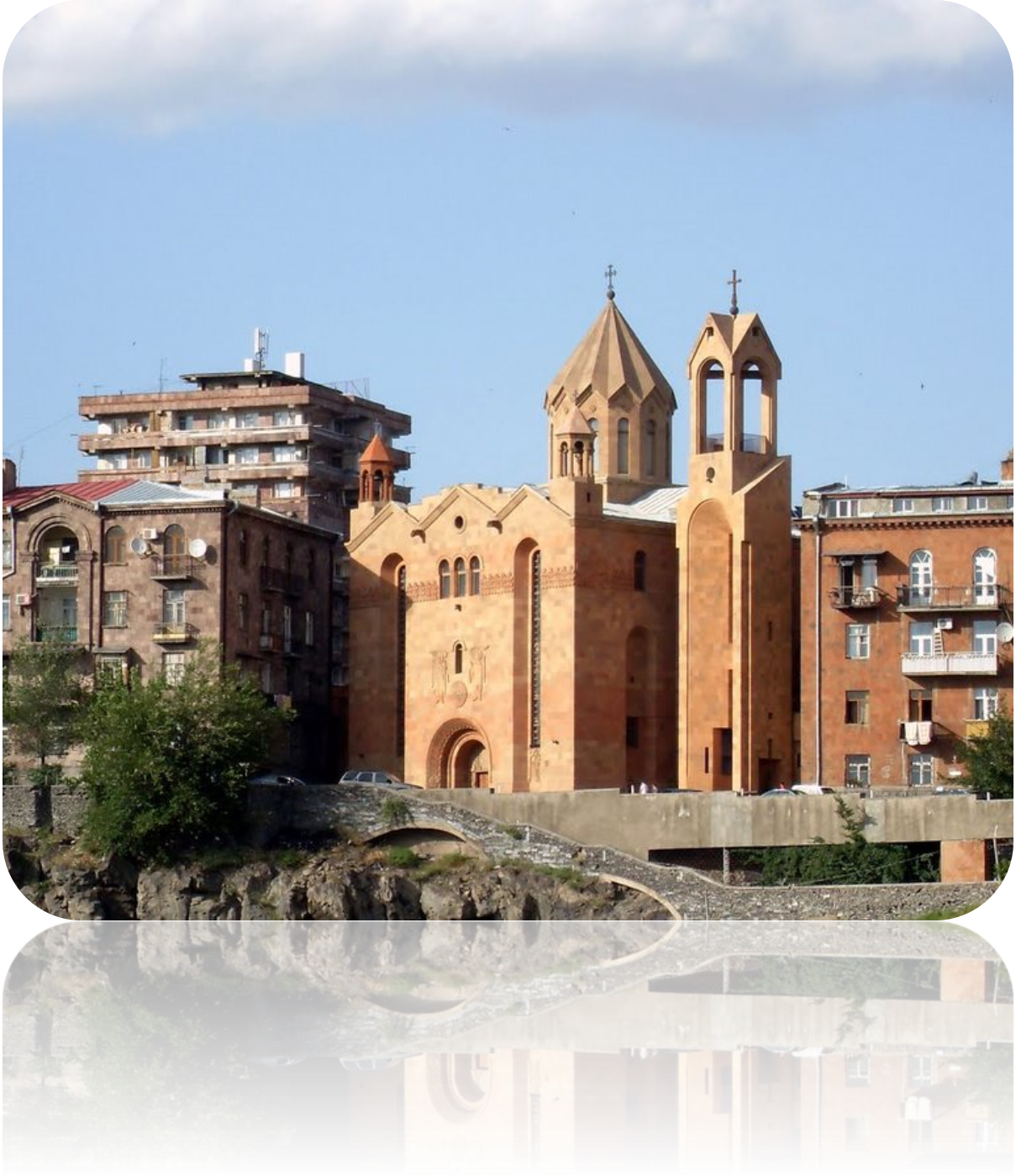
With the current building built between 1835 and 1842 on the site of the previous church, this cathedral also houses the seat of Archbishop Araratin of the Armenian Apostolic Church. The neoclassical interior of the cathedral has a number of paintings.
Church of St. Astuvatsatin Nork
Church of St. Astuvatsatsin, formerly called St. Marinus, is located in the heights of Nork district of Yerevan. Along with other monuments of Nork, this church was destroyed by the catastrophic earthquake of 1679 AD. But at the beginning of the 18th century, this church was restored with the help of the Travestician brothers, famous merchants.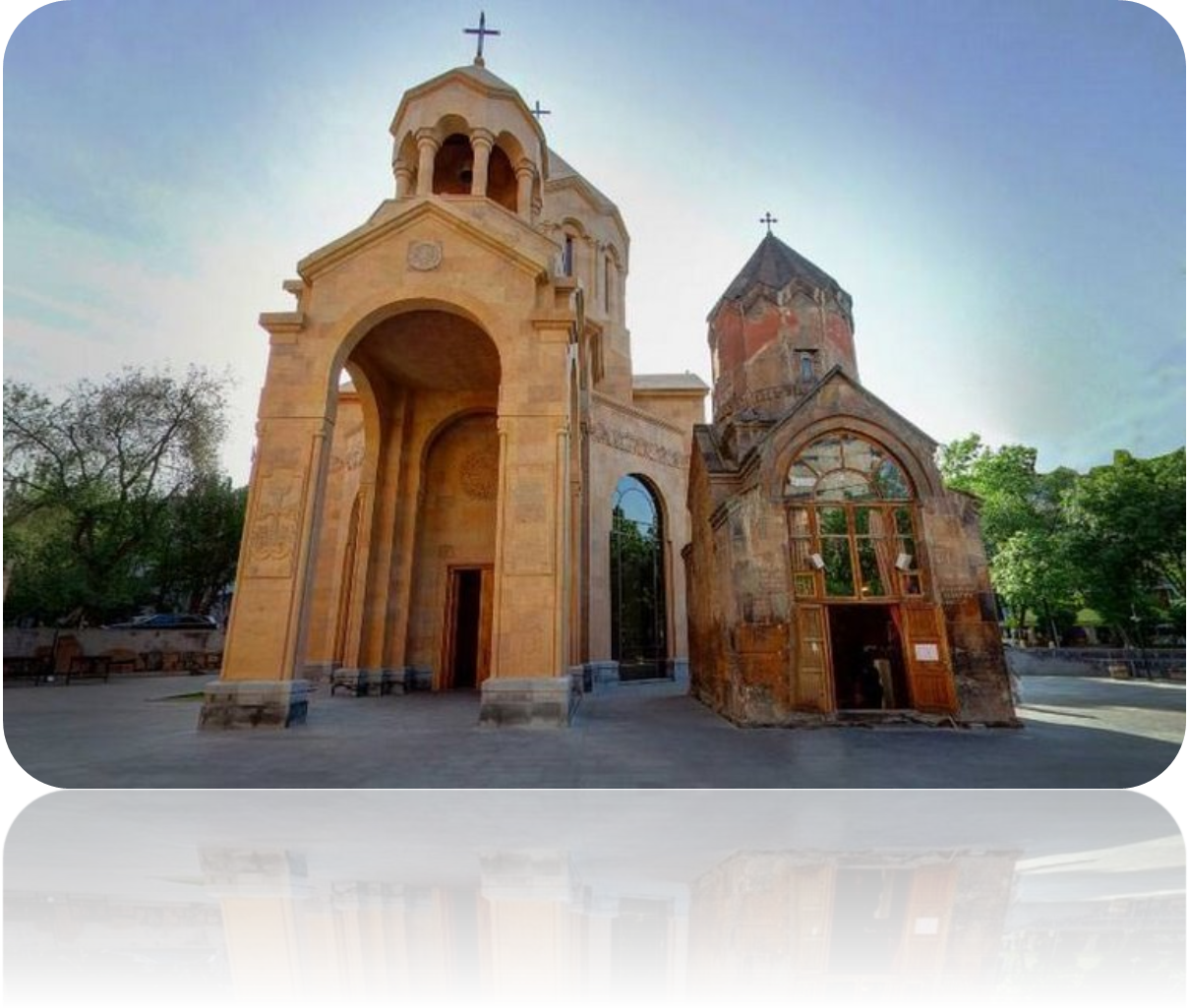
St. Astuvatsatin Nork Church is one of the oldest churches in Yerevan. During the reconstruction of this church, it was left unfinished due to the death of its main investor. After the declaration of new independence in Armenia in 1991, the residents of Nork started to rebuild the church with the financial support of the Union of Compatriots of Nork-Maresh. In 1995, St. Astuvatsatsin Church opened its doors to believers and tourists.
Xvarentos Cathedral, a monument of history
Zvarentos Cathedral is one of the most attractive places to visit in Armenia. If you go to see this cathedral, don't expect to see a complete building, but its columns, which are a reminder of this magnificent building, are still standing. Zvarentos means guardian angel and this church was built near the city of Vagharshapat. The church was built in the middle of the 7th century. It is interesting to know that until the beginning of the 20th century, the remains of this church and all its columns were underground. Until, in the excavations of 1900, the foundations of the cathedral, the ruins of Jathliq Citadel and the winery were brought out from the soil and the heart of history.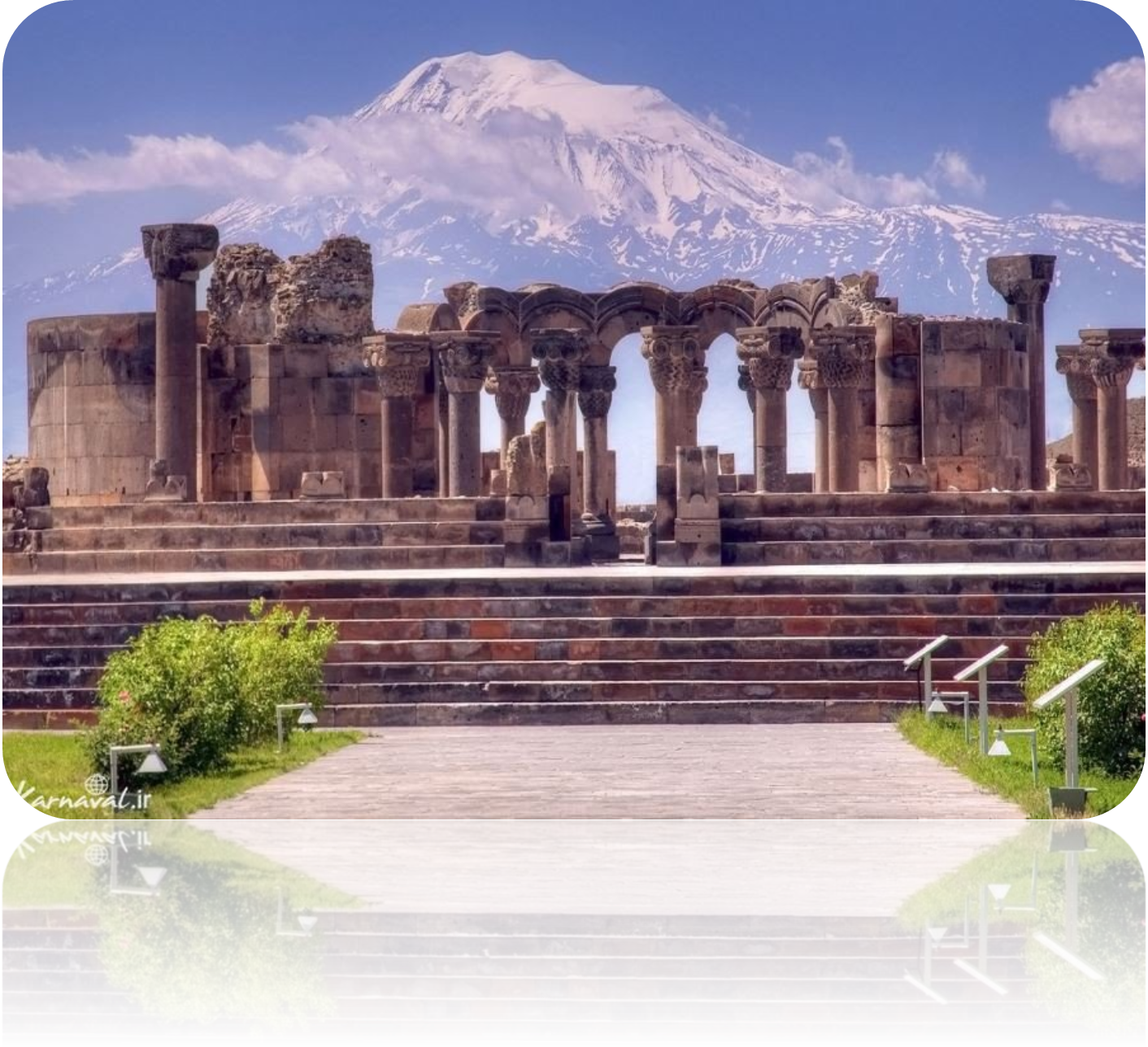
The end of the trip to the sights of Armenia
We had a trip to the sights of Armenia that have preserved their unique characteristics. Armenia was the first country to accept Christianity. So there are many ancient churches in it. The beautiful and spectacular nature of Armenia attracts countless tourists and nature lovers. The culture and awe of this country can be understood from its streets and museums.
